Homeschool Unit Study: King John of England
Why is it so easy to hate England's notorious King John? Oh, let us count the ways in this trash-talking unit study.
Why is it so easy to hate England's notorious King John? Oh, let us count the ways in this trash-talking unit study.
“Foul as it is, hell itself is made fouler by the presence of King John,” wrote Matthew Paris just a few short years after England’s much-despised ruler died of dysentery. There’s no question that the son of Henry II and Eleanor of Aquitaine was universally despised by his subjects, so it’s kind of ironic that John’s legacy includes—however reluctantly—the foundation for modern-day democracy. Mark the anniversary of King John’s death this fall by learning more about the worst king of England.
He was notoriously treacherous, lecherous, and cruel, but we owe our democratic government in part to King John, whose sheer terribleness inspired British nobles to curtail the rights of the monarchy and invest the nobility with rights of their own. When John signed the Magna Carta—after arranging this nephew’s murder, scheming against his Crusading brother, and generally being the worst ruler in Christendom—he forever changed the relationship between ruler and subjects.
READ THIS
Ivanhoe
Sir Walter Scott’s historical romance paints Prince John (acting king for Richard III, who’s off fighting in the Crusades) as scheming, tyrannical monarch, which is pretty much how his contemporaries and modern historians have viewed him.
(Middle grades)
The Merry Adventures of Robin Hood
Scott’s influence is apparent in Howard Pyle’s collection of Robin Hood stories, which cast tax-happy John as the tale’s central villain.
(Middle grades)
King John: Treachery and Tyranny in Medieval England: The Road to Magna Carta
John’s life of “intrigues, quarrels, battles, sieges, negotiations, truces, and betrayals” is illuminated through contemporary chronicles and his own letters in Marc Morris’ scholarly, readable tome.
(High school)
WATCH THIS
The Lion in Winter (1968)
Set in 1183, during Henry II’s reign, this film adaptation of the play by James Goldman focuses on the contentious relationship between John’s parents and certainly doesn’t cast a positive light on the effete, unpleasant prince—even if you might feel a little sorry for him when you imagine his childhood.
Robin Hood (1973)
Disney’s animated animal take on the Robin Hood legend includes a thumb-sucking, greedy Prince Johns whose comeuppance at the film’s conclusion feels well-deserved.
This was originally published in the Fall 2016 issue of HSL. Photo: Wikimedia Commons.
We the People: A Community Model for Exploring the U.S. Constitution
“A Community Conversation to Understand the U.S. Constitution” was a profound and powerful experience for Carrie’s homeschool.
“A Community Conversation to Understand the U.S. Constitution” was a profound and powerful experience for Carrie’s homeschool.
One of the more rewarding learning experiences I’ve had with my 14-year-old son this year has been participating in We the People MN, a series of community teach-ins about the Constitution held at Solomon’s Porch, a Minneapolis gathering space housed in a former church. Run completely by volunteers, We the People MN bills itself as “A Community Conversation to Understand the U.S. Constitution.” I wanted to share a little about our family’s experience with the series in the hope of inspiring other programs like it across the country.
The idea for the series came from Cara Letofsky, a South Minneapolis resident who posted on her neighborhood Facebook group that the 2016 election made her want to learn more about the Constitution. About 60 people responded that they shared that desire to come together as a community to educate themselves politically. A small group of about ten volunteers followed up to plan the series, deciding what amendments they especially wanted to learn about and collaborating to identify community experts who might be willing to tackle leading a discussion of particular amendments. Working their community connections, they lined up a group of highly qualified presenters willing to volunteer their time, including a law professor from a local university, a Minneapolis city council member, attorneys, law students, and organizers from groups that are deeply involved in such contentious Constitutional issues as gun control laws, the right to vote, and reproductive rights.
The organizing committee decided on a format of 10 two-hour presentations, spaced out every two weeks from mid-January 2017 to late April 2017. The first program was a kick-off potluck (because everything always goes better with good food) and a public reading of the entire Constitution, with participants taking turns reading sections aloud at the mic. The organizers also distributed free pocket copies of the Constitution, donated by one of the organizers, Constitutional law professor Matt Filner. Finding free or cheap pocket Constitutions isn’t difficult, luckily. The National Center for Constitutional Studies, for instance, offers a bulk purchase of 100 pocket Constitutions for $40 on their website.
Cara Letofksy, the woman who’d sparked the idea, expected perhaps 20 people to show up to the first presentation. To her surprise, over 80 people attended that first event, and attendance has usually averaged between 100 to 150 participants at subsequent events.
In their initial planning discussions, the organizers knew they couldn’t cover the entire Constitution, so they decided to focus on Constitutional rights that might be most directly challenged under a Trump administration. Other communities might want to choose a different focus, such as looking at ways the Constitution directly impacts local issues and controversies.
The We the People MN series has covered such issues as the branches of government and separation of powers, as well as the First Amendment’s guarantees of freedom of expression and assembly and the Second Amendment’s guarantee of the right to bear arms (as well as the limitations implied by the wording of the amendment). One program was devoted to the right to privacy (and the limits on our privacy). Another event focused on the Fifth, Sixth, and Thirteenth Amendments and their relevance to criminal justice today. The series’ last presentation on the amendments will look at the right to vote guaranteed by the Fifteenth, Nineteenth, and Twenty-Fourth Amendments—and how that right to vote is being steadily eroded today. The series’ last gathering, planned for the 100th day of the Trump administration, will feature a community potluck and “next steps” discussion.
Each event has included a “TED”-style talk by an expert to set the stage for further discussion, followed by time for participants to talk in small groups and share their thoughts and bring up questions for the expert presenter. Almost every presentation has also included brief talks by local activists working in some way on problems raised by ongoing Constitutional debates. Often, these activists have given participants in the programs concrete ideas about how to get involved. For instance, at the event devoted to Second Amendment issues, a presenter from the group Protect Minnesota passed out factsheets about upcoming gun legislation and tips for creating effective talking points. The group highlighted that the most effective advocates usually find a way articulate their personal connections to proposed legislation.
Each presenter also typically sends out readings ahead of time through the We the People MN Facebook page for participants who want to take a deeper dive into topics, though the readings aren’t required to understand the presentations. The readings have ranged from excerpts from the Federalist Papers to summaries of key Supreme Court cases to up-to-the-minute news articles about contemporary Constitutional controversies.
For my son and me, attending these events has been a bonding, highly relevant way to study civics together. Throughout our week, we often find ourselves still talking about what we learned at the most recent We the People presentation. The series has given us new tools for understanding how the Constitution relates to our everyday lives and the lives of those around us.
I’ve also found the series personally helpful as I’ve stepped up my own game as a citizen this year. I’m calling my legislators and attending more public hearings, meetings, and protests than ever (and when I can, hauling my son along with me). Studying the Constitution in this way has given my son and me a clearer sense of what people fighting for change are up against and how we as citizens can make the best use of our time and people power.
Above all, I love that my son has seen people of all ages and backgrounds getting together every other Sunday afternoon to educate ourselves about our Constitution. To me, that’s been such a powerful example of lifelong learning and civic engagement, one I hope will stick with him the rest of his life. I think another crucial piece of the whole experience has been learning from people who are actively involved in the conversation about how to define our Constitutional rights and who are fighting to preserve those rights.
The volunteers who set up We the People MN are hoping to export the model elsewhere. They have plans to create a curriculum to help other people set up their own series, ones that will be relevant to their local communities. If you’d like to learn more, see videos of the presentations, and keep apprised of curriculum developments, you can visit the group’s public Facebook page.
Book-Movie Match-Up: Agatha Christie
Book or movie? With so many Christie adaptations and books to choose from, we’ve rounded up the cinematic cream of the crop and the stories that give the most mystery mileage.
Book or movie? With so many Christie adaptations and books to choose from, we’ve rounded up the cinematic cream of the crop and the stories that give the most mystery mileage in text form just in time for her birthday on September 15.
READ THE BOOK: The Murder of Roger Ackroyd (1926)
The premise is simple enough — a newly retired Hercule Poirot agrees to investigate the murder of wealthy Roger Ackroyd. But this book turns the detective novel on its head in the best possible way. No wonder the Crime Writers’ Association voted it the best crime novel ever written.
Make your own call
Orson Welles’s radio drama The Murder of Roger Ackroyd is the best of the dramatic adaptations.
WATCH THE FILM: Murder on the Orient Express (1974)
Even Agatha Christie approved of Sidney Lumet’s star-studded adaptation of her 1934 classic — though she took issue with star Albert Finney’s scantier-than-she’d-imagined mustache for Poirot.
Make your own call
The book is pretty darn good, too, though.
READ THE BOOK: And Then There Were None (1939)
In this atmospheric thriller, ten strangers are invited to an isolated island, where they’re accused of past crimes and murdered one by one. The tension builds as they realize that the killer must be one of their own number.
Make your own call
This fairly recent BBC adaptation channels the book’s lingering atmospheric dread.
WATCH THE FILM: Death on the Nile (1978)
Mia Farrow is compelling as a jilted lover and Peter Ustinov brings a Continental gravitas to his first outing as Poirot in this gorgeously filmed whodunnit, featuring some pretty spectacular Egyptian scenery.
Make your own call
The book pulls your sympathy from one suspect to the next.
READ THE BOOK: Crooked House (1949)
Christie broke all the rules in this ostensibly mild-mannered investigation into the murder of a wealthy magnate by his granddaughter’s worried fiancé.
Make your own call
The 2017 adaptation plays up the drama — but it does star Glenn Close.
WATCH THE FILM: The Mirror Crack’d (1980)
Elizabeth Taylor and Kim Novak play to type as Hollywood actresses while Angela Lansbury is a convincing Miss Marple in this adaptation about a would-be murderer terrorizing a visiting actress.
Make your own call
The original book makes Miss Marple’s mild-mannered revelation feel completely shocking, even though there have been plenty of clues laid.
READ THE BOOK: Five Little Pigs (1942)
Christie gives Poirot a chance to test his own theory of detection — that all you need is sufficient reflection to solve any crime—in his investigation of a sixteen-year-old murder.
Make your own call
The best adaptation of this book is probably the season 9 Poirot episode.
This list was originally published in the summer 2015 issue of HSL. (We’re Amazon affiliates, so if you purchase something through an Amazon link, we may receive a small percentage of the sale. Obviously this doesn’t influence what we recommend, and we link to places other than Amazon.)
Going Out With a Bang! 10 Great Apocalypse Novels for High School
It’s the end of the world as we know it — and sometimes that’s not as bad as it seems. These 10 books about the end of the world are great for starting big conversations with your high school homeschooler.
It’s the end of the world as we know it — and sometimes that’s not as bad as it seems. These 10 books about the end of the world are great for starting big conversations with your high school homeschooler.
I’ve decided to go out with a bang(!) in my book recommendations this summer by listing my Top Ten Tales of the Apocalypse.
I’m actually something of a reading wimp, with a low tolerance for horror and blood-drenched thrillers. For many years, I carefully avoided zombies and other world-ending events (Meteors! Vampires! Really Bad Flu!) in my fiction, but in the past few years I’ve discovered a new attraction to near-apocalypses. Impending death forces characters to deal with the meaning of life — and do some very serious prioritizing — and I think many of us, in our everyday probably-not-the-end-of-the-world lives, struggle with how to separate what is meaningful and necessary from what is unimportant and time-wasting.
Of course, along with bringing up interesting moral issues, apocalypses are usually chock full of violence and death, so (unless otherwise noted) I’d recommend the following books for teen readers and up.
Station Eleven by Emily St. John Mandel
Two decades after a civilization-shattering pandemic, a small troupe of musicians and actors visits enclaves of survivors to stage Shakespeare plays. Their motto, taken from an episode of Star Trek: Voyager, is “Survival is Insufficient.” This novel achieved both popular and critical success upon its 2014 release and deservedly so. What I love about it, and what sets it apart from so many other popular end-of-the-world sagas (looking at you, The Walking Dead), is its refusal to give up hope. Mandel portrays the darkness in human nature, but she also sees the light — the ability of people to pull together in terrible circumstances and create communities that protect and support each other. By making room for all possibilities instead of focusing only on what is selfish and destructive in humanity, she creates a world populated by characters I can recognize and actually believe in.
The Last Policeman by Ben H. Winters
Hank Palace has finally achieved his dream of becoming a detective. Unfortunately, it’s under difficult circumstances: an asteroid is scheduled to hit Earth in six months, causing an extinction-level event, and in this pre-apocalyptic world civilization is starting to break down. If the world is going to end in less than a year, do you keep going to work every day? Is the answer different if you are a police officer, or a surgeon, or someone responsible for keeping the power on? In addition to the murder mystery at the core, there are a lot of fascinating moral questions in this novel, first in a trilogy (which, SPOILER ALERT, does not end well).
The Gone-Away World by Nick Harkaway
I love this book so much that I don’t even know how to tell you about it. Set after the Go-Away War, where humanity was devastated by the invention of a new weapon that caused people and objects to simply go away (with, not so shockingly, unexpected and terrible side effects), we follow the adventures of two best friends, part of a team of ex-special-operatives, as they take on a dangerous mission. With mimes, ninjas, and pirates! Amazon calls it a “hilarious, action-packed look at the apocalypse” but fails to mention that certain readers may become so attached to the characters that things get very emotional at times. (I only cried a little, OK?) This is one of those books that is not going to work for everyone, but if you’re are in the mood for a novel that is so out there you’ll read most of it with your jaw hanging open in amazement, you should look no further. (Don’t forget to pick up Harkaway’s other two books, Angelmaker and Tigerman, and definitely email me so we can discuss them all AT LENGTH.)
World War Z: An Oral History of the Zombie War by Max Brooks
Forget Brad Pitt. This novel (which shares a title with the movie version, but not much else) consists of a series of interviews with various survivors of the Zombie War. It’s unique in that it depicts the global scale of the disaster and tells much of the story from the perspective of the military forces involved. Some of the events were so disturbing and haunting that it took me years to work up the courage to reread it, whereupon I discovered that the pieces I found so unsettling were only mentioned briefly in the narrative — the author had succeeded so well in creating the world that I had filled in all the blanks myself without even realizing it. Maybe one day I’ll be brave enough to listen to the audiobook adaptation, which includes Nathan Fillion, Alan Alda, and Mark Hamill among its stellar cast.
The Sundial by Shirley Jackson
In this list I’ve chosen to highlight more recent books, leaving off classics like The Stand, On the Beach, and Alas, Babylon, but I had to include this 1958 novel by Jackson. One of her less well-known works, it follows the Halloran family after Aunt Fanny has a vision of the coming apocalypse. As one would expect in a Jackson story, the Hallorans and their hangers-on are strange, unsettling, and occasionally very funny. Plus there’s a creepy mansion, so that’s good.
The Age of Miracles by Karen Thompson Walker
Adolescent Julia and her family struggle to deal with massive changes as the rotation of the Earth inexplicably slows. While I struggled a bit with the science (or the massive lack of it) in this particular apocalyptic scenario, that’s not really the point. Instead, as Buffy the Vampire Slayer used a Hellmouth to point out the challenges of high school and teenagerhood, Walker uses the possible end of the world as a backdrop for this coming of age tale, where Julia wonders if she’ll even survive the dramatic changes, both personal and global, taking place in her world. (This is one of the only novels on the list that I’d be okay handing to a middle schooler.)
Zone One by Colson Whitehead
Prior to winning every lit award on the planet with Underground Railroad, Whitehead wrote this zombie novel, following the protagonist and his fellow “sweepers” as they patrol the ruins of New York City, trying to eliminate the remaining infected. It’s a slow-moving, thoughtful take on the zombie genre—at least until everything starts to go horribly, inevitably wrong.
Pure by Julianna Baggott
I’ve read my share of YA dystopias (usually featuring a female lead born to set things right) but the post-apocalyptic world of Pure is unlike anything I’ve seen before. Pressia lives outside, with the other “wretches” suffering the effects of radiation which has caused human flesh to fuse with inanimate objects, while Partridge and his family live among the “pures” in the Dome. This novel, first in a trilogy, was unsettling and unique and memorable, and I couldn’t wait to read the sequels—which, unfortunately, I ended up disliking intensely for many reasons, but mostly because they didn’t live up to the promise of the first volume. Despite that disappointment, Pure was so good that I still recommend it for anyone looking for something new and powerful in the YA dystopia genre, though I wouldn’t necessarily advise continuing on in the series.
All the Birds in the Sky by Charlie Jane Anders
Some say the world will end in science, some say in magic — but why choose? In this award-winning science fantasy, two childhood friends take diverging paths — one talks to animals, one builds a two-second time machine—but as they reach adulthood and the planet falls apart around them, they must figure out if they can work together to save the world. I already gushed about this one with Amy on the podcast, but I can’t resist an opportunity to recommend it again.
The Girl With All the Gifts by M.R. Carey
I’ve saved one of my very favorites for last—this zombie-apocalypse novel takes on deeply human themes while still being scary and action-packed and gory (as one expects when you’ve got zombies around). It was the inspiration for the high school Apocalyptic Lit class I’ll start teaching in a few weeks at the Academy (which will also cover Station Eleven, The Last Detective, The Sundial, and The Age of Miracles). And I can’t really tell you much more than that, because part of the fun going in is not knowing exactly what’s happening, so email me when you’re finished reading and ready to talk about it. (In the meantime, I’ll be reading the just-out prequel, The Boy on the Bridge.)
A Paradise Built in Hell: The Extraordinary Communities that Arise in Disaster by Rebecca Solnit
BONUS NON-FICTION PICK: I sang the praises of this terrific book in a recent Library Chicken Update, so I’ll try to keep it short here, but if you’re interested in what actual human beings do in actual times of disaster (HINT: It’s a lot more like Station Eleven than The Walking Dead) you should pick this up immediately. Even without the occasional solar eclipse, it’s been feeling a bit like the end of the world lately, and I found this book to be both timely and inspirational in its depiction of how human beings can come together to help each other. Fair warning: it’s also frustrating and sad and maddening at times as it details the ways that authority figures have let us down in the past (the Hurricane Katrina chapter is especially difficult), but we can only change the narrative when we understand what’s gone wrong and why.
Here’s hoping that we get through the next year with no mutant-zombie-vampire-pandemics (if there is an apocalypse, I’ll be the one with zero useful survival skills), and I’ll see you next summer!
(We’re Amazon affiliates, so if you purchase something through an Amazon link, we may receive a small percentage of the sale. Obviously this doesn’t influence what we recommend, and we link to places other than Amazon.)
Looking for a YA Thriller? These Books Will Keep You Turning Pages
If you’re looking for a twisty turner teen thriller, these recent YA books about teens in dangerous situations may be just what you’re looking for.
If you’re looking for a twisty turner teen thriller, these recent YA books about teens in dangerous situations may be just what you’re looking for.
The Follower by Kate Doughty
If you've ever watched HGTV while listening to a true crime podcast, The Follower is for you! The Cole triplets are an Instagram sensation, following their house-flipping parents from one dramatic renovation to the next and racking up sponsorships along the way. It’s a glamorous life — but not always a fun one, since every moment has to be painstakingly captured in a succession of filters and the teens always have to have their camera faces on. Cecily is burned out on being the pretty one, brother Rudy just wants to keep everything rolling smoothly, and Amber can’t help but notice that her plus-size body gets edited out of family photos too often. Plus there’s the problem that their parents’ Instagram-famous renovations aren’t doing much to put a dent in the family’s giant debt.
Now they’re on their biggest project yet: a huge mansion in a small town which is famous for the gruesome murders that took place there — and rumors that it might be haunted. The triplets play up the haunted house angle for the camera, but they can’t help noticing that weird things ARE happening. Stuff goes missing, suspicious shadows move along the hallway, and that’s just the beginning. Someone doesn’t want the Coles in this house.
The triplets are interesting people in their own right and not a homogenous lump, which is nice. Amber, especially, finds that their new small town life suits her: She starts stepping out from behind her picture-perfect sibs (with lots of support from them, which is lovely), finds a girlfriend, and starts to find herself. The trio’s relationship is believably complicated but mostly warm and supportive — they’re different people, but they love each other. The Cole parents are kind of terrible in the parents-using-their-kids-as-Instagram-moneymakers vein, and there’s a lot of (fair) criticism of online culture in the book. It does get a little wonky plot-wise, especially with the haunted house bits, and several things (including — warning! — violence toward adorable household pets) are predictable stalker-angry ghost tropes. (Even the ending is kind of obvious if you’ve read many books in this genre.) Still, it’s a fun, fast YA thriller, and I enjoyed it.
The Glare by Margot Harrison
The Glare is all the warnings about screen time rolled into one otherworldly drama: Hedda has been living off the grid with her mom for a decade, ever since a childhood incident convinced her parents that computers made her “off-kilter.” Hedda can’t remember anything about what happened, but she’s grown up protected from “the glare” of computer screens. Now, though, Hedda’s headed back to the real world to live with her computer game designer dad and his new family, and technology is everywhere. Practically her first night in the real world, she ends up playing an oddly familiar first-person shooter game on the dark web, and memories of the past slowly start to return. The game, it turns out, is part of an urban legend: Die 13 times on level 13, and you’ll die in the real world. It seems ridiculous — until gamers start dying around her, and Hedda’s cell phone starts receiving threatening messages. Is her mom right that technology is making her a little crazy? Or is something even more sinister going on?
It’s a cool idea, and I found the first half of the book, setting all of this up, fairly interesting, but then it seems to skid off the rails a bit. It starts out all Black Mirror-ish, critiquing technology even as it embraces its possibilities, but that’s not where it ends up — which is fine, but the transition feels clumsy and unfinished. And while the idea that the darkness inside us is the real villain is always interesting, it’s kind of undermined by the fact that there is an actual villain, lurking in the shadows, doing villain-y stuff for ill-explained reasons. Still, some of the early scenes with the game bleeding into the real world are deliciously creepy, so if that’s your thing, you should totally pick this one up.
The Mary Shelley Club by Goldy Moldavsky
OK, so one of my YA literature pet peeves is when it turns out that everything in the story has always been about the heroine, and that means there is no way I was not going to be annoyed by The Mary Shelley Club. Which is a shame, because I loved the title and the idea of a secret teen club dedicated to pulling off terrifying pranks.
Rachel’s the new kid at Manchester Prep, and all she really wants is a fresh start after a traumatic event made her notorious in her old town. Manchester Prep is full of entitled kids whose allowances are bigger than her family’s rent, but Rachel quickly becomes part of a secret club dedicated to fear — specifically, each member has to scare a scream out of a chosen target. But Rachel can’t help feeling like there’s something going on she doesn’t know about, and it may be a lot more than a prank in the planning.
The book starts off strong and builds to a shivery middle, but the end collapses a bit into melodrama and the aforementioned need to make everything ultimately about the heroine. Worth reading? Sure, if it sounds like your thing, but it’s not my favorite. Mary Shelley deserves better.
The Murder Game by Carrie Doyle
In The Murder Game, Luke’s bad boy roommate Oscar is the prime suspect in their teacher’s murder, and no one seems interested in proving his innocence but Luke. The title (and cover) may make you think there’s more than one murder in store for you or some kind of game, but nope, it’s kind of a typical boarding school teen murder mystery. There’s a cast of suspects (the teacher’s husband, who also happens to be the dean; the dean’s ex-wife; the teacher’s ex-husband; etc.), and a loner girl with a secret past who teams up with Luke to solve the murder. The adults feel like caricatures (though I suspect teens often see adults that way), and the students aren’t super well-developed. Luke, for instance, has a crazy backstory, in which he was apparently held captive in the woods but escaped using his survival skills, but even though that seems more interesting than the actual murder mystery plot, that backstory is never really developed. And, really, failing to get into this story kind of meant that Luke was a pretty static character — we can’t see him grow if we don’t know who he is.
This sounds critical, but every book doesn’t have to be a classic. If you’re in the mood for a fast, fun YA mystery, this one might just fit the bill.
You Owe Me a Murder by Eileen Cook
The thing about rewriting a Hitchcock classic thriller is that you really need something to set your story apart from the original — to make it feel like you’ve made the story your own. Sadly, You Owe Me a Murder doesn’t manage this, and it ends up feeling like a watered-down YA version of Strangers on a Train.
When freshly dumped Kim meets Nicki, a stranger on a plane, she’s ready to murder her ex, who not only broke her heart but also managed to break it just in time for Kim to be stuck on a class trip to London with him and his new girlfriend. Nicki’s got her own problems with her mom, and when she suggests they swap murders, Strangers on a Train style, Kim laughs it off — until her ex-boyfriend turns up dead, and Nicki starts blackmailing Kim to hold up her end of the bargain.
Kim is an unreliable — and increasingly unlikable — protagonist, and I do like that she’s not just a Good Girl in a Bad Situation. The book is definitely fast-paced — which is handy, since we all already know the major plot beats. But I did not like the gratuitous love interest, I did not like the sheer predictability of the story, and I especially did not like the resolution, which fell flat after all the tension-building. Maybe I would have liked it more if I hadn’t watched the movie (and read the book on which it was based) so many times? But this one fell pretty flat for me.
Five Total Strangers by Natalie D. Richards
Five Total Strangers is obviously about a group of people who turn out NOT to be total strangers, and while I am down for a Hitchcockian thriller, this one relied a little too heavily on coincidence to keep me engaged. Mira’s on her way from her fancy California art high school back home to her mom, who’s still a bit of wreck a year after her twin sister — Mira’s aunt — died from cancer. Mira’s not doing so great either — and she’d probably be doing even worse if she knew that she’d been being stalked for the past year. Lucky (??) for her, she doesn’t know because her stalker has been sending mail to the wrong address — but that’s okay, because Mira’s stalker is on her flight, and when the airport shuts down during a snowstorm, Mira’s stalker is one of the FIVE TOTAL STRANGERS who agree to rent a car and drive together. I mean, OK, Mira’s stalker is biding their time, and this opportunity just kind of presents itself, but this seems like an increasingly big reach as the squad of teens gets into a series of snow-related accidents, gets chased down by an angry convenience store owner with a gun, and keeps running into the same creepy hitchhiker wherever they stop. Because Mira has no idea she’s being stalked, the big reveal is basically her discovering a stack of letters addressed to her in the trunk of the car, freaking out, and immediately getting into a cliffside shove-off with her stalker. It’s pretty unsatisfying, especially since the letters from her stalker are sprinkled throughout, hinting at a more nuanced resolution. If you can get over the more and more unlikely incidents and just relax into the drama, this is an entertaining soap opera-y stalker story (but with none of the psychic dread of actually being stalked), but it broke my willing suspension of disbelief pretty early and never got it back.
I Hope You’re Listening by Tom Ryan
When she was seven, Dee went into the woods with her best friend Sibby. Sibby never came back — Dee watched her abduction and told the police everything she could, but Sibby was gone.
A decade later, Dee is still haunted by the loss of her childhood friend and obsessed with missing persons cases — so much so that she’s become the (heavily disguised) voice behind the popular Radio Silent true crime podcast. Dee and her team of internet detectives have even racked up an impressive record of solved cases — bringing the podcast to the attention of mass media, which Dee definitely doesn’t want. Meanwhile, another little girl goes missing from Dee’s family’s old house, and Dee can’t helping making the connection to Sibby’s disappearance all those years ago. Could this be her chance to finally find out what really happened to her best friend?
I enjoyed I Hope You’re Listening, which was fast-paced, engaging, and peopled with likable characters. The plot got away from itself here and there and it felt over-written in places — have editors just stopped actually editing books? Is that not a thing anymore? — but I liked Dee enough to stick with her, and I’m glad I did. So much of what happens to us as kids and teenagers shapes who we become and the ways we choose to live, and I loved watching Dee realize that, accept it, and counter it on her own terms. Not all of us deal with being the spare kid in an abduction scenario, obviously, but we’re all tangled in our own history, often in ways we don’t realize. I think the book did a nice job of illuminating that. And, of course, I loved the Radio Silent community — there’s a part at the end where they play kind of a big role, and I’m not going to lie, I got a little weepy thinking about the way that strangers can be friends thanks to the connections we forge on the internet.
So a solid read for me, even with some sloppy storytelling. I’d recommend it for your YA reader obsessed with true crime.
(We’re Amazon affiliates, so if you purchase something through an Amazon link, we may receive a small percentage of the sale. Obviously this doesn’t influence what we recommend, and we link to places other than Amazon.)
37 Fun Ways to Celebrate the First Day of Homeschool
It's that time again! We've rounded up some great ways to celebrate your first day of the new homeschool year, whether you want to keep it simple at home or take a big adventure together.
It's that time again! We've rounded up some great ways to celebrate your first day of the new homeschool year, whether you want to keep it simple at home or take a big adventure together.
Those yellow school buses and crowded bus stops are a sign that school is back for traditionally schooled kids, but how do you celebrate the first day in your homeschool? We homeschool year-round, but we still make a big deal out of our First Official Day of the new school year. Is it just an excuse to buy fun school supplies and eat ice cream? Maybe, but it’s something we all look forward to, and little celebrations are an important part of homeschool life. If you’re looking for a little First Day of Homeschool inspiration, one of these ideas might be just right for your homeschool celebration.
Go roller skating.
Visit a paint-your-own pottery studio to create a special back-to-school souvenir.
Have a backyard campout.
Give everyone a small budget, and hit a flea market to refresh your homeschool space for the new year.
Spend the whole day in your pajamas.
Work on a volunteer project together.
Plant a container garden.
Drive to the nearest river and go tubing.
Set your alarm to wake up and watch the sunrise together. (You can take a nap later!)
Go out for a fancy brunch.
Ask everyone to make a First Day of School mixtape and trade your mixes.
Take a hot air balloon ride.
Have a karaoke party.
Make a first-day-of-school time capsule.
Take back-to-school photos.
Compete in a backyard Olympics competition.
Write a letter to yourself to open on the last day of the school year.
Go geocaching.
Pull out your art supplies, and create self-portraits.
Make new school year’s resolutions.
Take a day hike.
Have a karaoke party.
Paint a mural.
Dress up in last year's Halloween costumes.
See a movie matinee.
Have a backyard luau.
Build and launch rockets.
Bake and decorate a back-to-school cake.
Have a tea party.
Wash your car.
Decorate your driveway with sidewalk chalk.
Take a personality test, and compare results. (Try the Enneagram or the Myers Briggs test.)
Fill up your wall calendar with holidays, birthdays, events, and celebrations you are looking forward to this year. (Our monthly inspiration guides can help you out with this!)
Solve a jigsaw puzzle together.
Write your autobiography.
Go shopping for school supplies.
Make official school t-shirts.
Amy’s Library Chicken: What I Read in May
Modern Gothic, hopeful speculative YA, classic kids lit mash-up, and one of my favorite new book discoveries made May an awesome reading month.
May is a heavy grading month for me, so a lot of my reading was student writing! I’m also reading lots of books to prepare for classes next year, which I will only review if I think they’re worth reading as standalones in their own right. But I thought some of the books I read this past month were pretty great.
White Smoke may be the modern Gothic vibe I’ve been looking for — maybe the missing ingredient in modern Gothic is that sense of real-life evil permeating beneath the surface, and this book (by Tiffany D. Jackson, who also wrote the terrific Monday’s Not Coming, which isn’t Gothic, but which now that I am looking back it definitely has that air of foreboding so essential to The Gothic Experience) tangled its haunted house mystery up with racism and capitalism in ways that made it genuinely creepy. Marigold’s mom wins an art fellowship that comes with a lovingly restored house in a small town all the way across the country. It’s a fresh start: Mari’s mom has just married a widower with a tween daughter, and they’re trying to figure out what their new family looks like, especially since Mari, her mom, and brother are Black, and Alec and Piper are both white. Mari’s also got stuff of her own to navigate: After an unfortunate bedbug incident triggered her OCD (and a drug coping mechanism that ended up with her overdosing her bedroom), Mari’s just trying to figure out how to get through the day. This is hard because their new house is weird — doors open on their own, shadows flit by places where shadows shouldn’t be, the power cuts on and off at weird times, and Mari’s new sister warns her that “Aunt Suga” doesn’t want Mari in her house. Trigger warning for bedbugs (I cannot stress this enough!), but if you, too, have been looking for some modern Gothic that satisfies in the creepy department, you may want to try this one, too. (It also has some of the problems you can run into with Gothic stories, but I’ve been wanting something actually creepy so bad that I would forgive it a lot!)
The follow-up to the amazing Raybearer (seriously, if you haven’t read this book yet and you like YA fantasy, you really should!), Redemptor does NOT suffer from second book letdown. At least it didn’t for me — it picks up right where Raybearer ends, with Tarisai the newly anointed Empress, charged with anointing her own council and traveling to the Underworld to fulfill her deal with the sinister spirits of the dead. Because this is the focus, the family building aspect of Raybearer is less present (though definitely still there!), and the relationships are less important than Tarisai’s own journey. This was OK with me because I felt like it made sense — I missed Kirah, but I liked that she was off having her own journey and that her story wasn’t just about being Tarisai’s friend. There are lots of fun twists, some great new characters, and an overall spirit of hope and possibility that frankly feels essential in the world today. I liked the first book better, probably, but I found its conclusion satisfying in pretty much every way.
See You Yesterday is a light-and-fluffy YA comedy about two college first-years stuck in a time loop. It’s basically Groundhog Day on a college campus and just the thing for a heartwarming beach read.
I’m honestly not sure how I feel about This Appearing House. I think that’s because I have a kiddo with a chronic health condition, which may not seem relevant, but I think it definitely affected my feelings about this book, so I want to mention it. Jac is almost five years cancer-free, but the weight of her diagnosis is still hanging over her head — and she’s had a few moments recently that made her wonder if she’s experiencing symptoms again. When some classmates dare Jac and her new friend to go inside the mysterious house, she finds that her darkest fears are shaping what’s inside — and that she’s going to have to be very brave if she wants to find the way out. This book definitely falls into the spooky middle grades genre — it’s very atmospheric and full of deliciously creepy moments. It’s also clearly a metaphor for what it’s like to go through a serious illness. I think the central idea — that the way out is through — is important, and I know that kids going through health crises need to see themselves represented in literature. I really appreciate that this book didn’t shy away from that. Something about it didn’t quite sit right with me, though, and I can’t put my finger on what it was. That’s why I think it might be connected to my own experiences and not to the book.
The Clockwork Queen is definitely going on my middle grades recommendations list. Sophie’s father gets hired to be the chess tutor to Catherine the Great’s son — but when lessons don’t go the way the empress wants them to, Sophie’s father is imprisoned, and Sophie and her mom are left to fend for themselves. Sophie relies on her father’s chess lessons to get by — and then her chess skills bring her an opportunity to rescue her father. I am very fond of stories about early robots, about Russian history, and about chess, so this book ticked a bunch of boxes for me.
I always enjoy Sarah Waters, but Affinity isn’t my favorite. It’s about a young lady in Victorian England who takes up visiting women prisoners as a way to recalibrate her life after a suicide attempt. She’s captivated by one of the prisoners, a young medium imprisoned after the death of her benefactress during a seance. I’m fascinated by Victorian spiritualism, and I love the way Waters nails her endings — this was a solid book. I’ve just enjoyed other of her books more.
A Secret Princess is out later this month, and it’s a wild and wacky mash-up of three Frances Hodgson Burnett classics: A Little Princess, The Secret Garden, and Little Lord Fauntleroy. The Little Princess, Sara, is an heiress from the Philippines; Mary from The Secret Garden is a rebel with a lot of causes; and Cedric is the poor little rich boy whose chronic health condition constantly disappoints his aristocratic family. The three meet up at Miss Minchin’s repressive and prestigious British boarding school and become fast friends. When a series of unfortunate events upend their lives, the trio run away from school to start a new life together. You probably won’t be surprised that the three stories are virtually unrecognizable from their original forms, but as long as you don’t go in expecting that, this book feels like a fun, fan fiction romp through a literary landscape where you’ll occasional spot a familiar landmark. I had no expectations going in and thought it was a lot of fun.
Wow, I loved Pretty as a Picture. I’m honestly surprised by how great I thought I was — I would read an entire mystery series with Marissa as the main character. She’s a film editor who is fantastic at her job turning pictures into stories and terrible at people-ing, so all she wants to do is hunker down in the editing room and get to work on her new true crime movie. The universe, however, has other plans, and Marissa ends up investigating the murder of the actress playing the murder victim with the enthusiastic assistance of two teenage girls and an ex-military security guy who might have motives of his own. It’s so much fun! I really loved how Marissa uses mental movie clips to identify or explain her feelings in a given moment — it reminds me of how I use bits from books the same way. This was one of those books that I discovered randomly, which somehow makes loving it even more delightful. I’m going to recommend this one if you like mysteries.
Survive the Night, on the other hand, was a random pick that did NOT delight me. Friends, if your best friend is murdered by a serial killer, please do not ride share with a random stranger you find on your college bulletin board. Maybe especially do not do this if you have a mental condition where you frequently aren’t sure what is real because your mind turns things into movie scenes. Consider taking a bus instead.
Did you read anything great in May?
I post my Library Chicken roundups on the HSL Patreon every month and on the blog here when I think about it! (We’re Amazon affiliates, so if you purchase something through an Amazon link, we may receive a small percentage of the sale. Obviously this doesn’t influence what we recommend, and we link to places other than Amazon.)
Camp Like a Homeschooler
Nature time is one of the best parts of homeschooling — and a weekend camping trip is the ultimate homeschool nature adventure. Here’s how to make your homeschool camping trip a fun experience for the whole family.
Don't forget to pack your spirit of adventure and make this year's family vacation one to remember.
“Nature time is one of the best parts of homeschooling,” says homeschool dad Joel Tiegs, who, with his wife Anna, homeschools their three children. “And it’s surprising that it took us so long to make camping a part of that because it’s so obvious that weekend camping is the ultimate nature study.”
The Tiegs family had never been camping before their first family expedition, and “there was definitely a learning curve,” says Anna. “Do not make our mistake and go all-in on your first camping trip. Start with an overnight and work your way up.” Ultimately, though, camping felt like a happy extension of the Tiegs’ homeschool life, and now loading up the car for a camping adventure happens about once a month.
We all know the benefits of outdoor time — reduced stress, improved creativity, deeper connections to the natural world, affordability — and even if you’ve never pitched a tent, you can put together a fun family camping trip that just may inspire you, like the Tiegs clan, to make camping part of your homeschool life. We’ve got everything you need to know to plan that first family camping trip right here.
The Organized Adventure
We’re lucky in the United States, where a road trip can take your campout to mountain peaks and desert valleys, to natural wonders and woodland lakes. How do you choose the perfect spot for your family camping trip? These tips should help you narrow it down.
Keep it within easy driving distance.
Eventually, you may want to venture far and wide, but if you’re newbie campers, stick with campsites within a two-hour radius of your home base. Not only does this make a short drive to your destination, which means no car-lag to deal with when you arrive or worries about getting set up before dark if you hit traffic along the way, says Jen Aist, author of Babes in the Woods: Hiking, Camping, and Boating With Babies and Young Children. Keeping it close to home also takes away that panicked what-if-everything-goes-wrong feeling. “If everything goes wrong, you’ll load up the car, drive home, and try another time,” Aist says.
Stick with state and national parks.
If you’re new to camping, you will want decent bathroom facilities. Trust us: Helping your 9-year-old eliminate in the dark woods with nothing but a headlamp and a roll of toilet paper is not how you want to spend your first camping trip. Most state and national parks have restrooms, often with showers, and other amenities like on-site firewood bundles, running water, and even small supply stores. Check the park’s website (and Yelp reviews) to see what kind of facilities are available to campers.
Do advance reconnaissance.
Unless you’re an experienced naturalist, identifying new-to-you birds, bugs, trees, and wildflowers on the spot can be tricky. Prepare for your campout by spending some time getting familiar with your campsite’s local flora and fauna so that you’ll be able to identify it when you see it. You may still fumble for some identifications, but it’s amazing how much more competent you’ll feel knowing you can probably recognize a few local nature highlights.
Pick two activities.
On an overnight campout, you can reasonably fit in two nature activities: a longer activity the day you arrive and a shorter activity to enjoy between breakfast and packing the next day. The park website is a good place to start — most parks list on-site recreational activities as well as nearby ones. If you’re trying something brand-spanking new that none of you has done before — say, your first family canoe trip — do yourself a favor and look for a guide or beginner’s program that can walk you through the basics. There’s no one-size-fits-all approach to choosing campout activities, but including one tried-and-true activity you know your family enjoys and one activity that’s new to some or all of you can be a good plan, says Meri-Margaret Deoudes, spokesperson for the National Wildlife federations's Be Out There initiative, which encourages kids to get outside. (Plan your new adventure for your shorter, morning activity.)
Always Safety First
Camping is an adventure — and while it’s usually perfectly safe, there are a few things you can do to make sure your crew comes back from campouts healthy and happy. When you check into your campsite, be sure to ask for directions to the nearest emergency care facility and the best way to handle after-hours emergencies. You’ll probably never need to use this information, but it’s good to have.
You know to bring a first-aid kid, but don’t forget to add items for your family’s specific needs, such as prescription medications or kid-safe pain reliever and allergy medicine, recommends Anna Tiegs. “On our first camping trip, I forgot my contact lens solution and had to spend most of the trip viewing the world through my near-sighted eyes,” Anna says. “General checklists are great, but everybody has specific things they need to function every day. Make sure you’ve included yours in your kit.”
Set ground rules for safe camping: Everyone needs a buddy, even if you’re only venturing as far as the bathroom, and no one’s allowed beyond a certain visual perimeter. (Big trees, fallen logs, flowering plants, and other clearly obvious natural objects make easy-to-define boundaries.) “After our son Rowan wandered a little too far and scared us all to death, we started tying red bandanas around tree branches to mark the roam-free boundary of our campsite,” says Joel Tiegs.
Encourage kids to talk and sing if you’re hiking or exploring — if critters can hear you coming, they’re likely to hide before you get there, but accidentally sneaking up on wildlife can kick their defenses into action, says Randy Johnson, author of Best Easy Day Hikes: Great Smoky Mountains National Park.
Clean up thoroughly after every meal, and keep your food stored out of sight in your car. (If you’re in a car without a closed trunk, cover food with a blanket or towel so curious — and smart — creatures like bears don’t spot it.) Never bring food into your tent. People think of bears breaking into tents for food, but skunks, raccoon, snakes, and other wildlife are just as likely to be drawn to the smells of food.
Check your kids (and yourself ) thoroughly for ticks periodically during your camping trip to follow the Centers for Disease Control and Prevention’s guidelines for outdoor safety. Be sure to check sensitive areas, including the scalp, groin, armpits, and belly button. In addition to sunscreen, use a child-safe bug and tick repellent containing 20 to 39 percent DEET, and spray it on clothes as well as on your exposed skin. Tucking in shirts and pants (into socks or boots) can also help reduce your risk when walking through woods or un-mowed grass.
Teach kids to avoid poison ivy, oak, and sumac with the handy memory aid “Leaves of three, leave it be.” What if you do come into contact with poison ivy? Get kids to quickly soap up in the shower — baths can cause irritation to spread — and apply calamine lotion from your first-aid kit to the affected area.
Take it in Stages
If you want camping to be a great experience, don’t head straight for the woods. Instead, follow this three-step plan to help you get the hang of everything before you tackle your first official wilderness adventure.
The Backyard Campout
Give your equipment an official test drive in a no-stress spot: Set up (and take down!) your tent, build a small campfire, boil water for hot chocolate, and have a sleepover in your new sleeping bags right in your own backyard. This is smart for a couple of reasons, says Jen Aist. You’ll get comfortable with your equipment, you can pop inside for anything you forgot (and make a note that you don’t want to forget it when you’re actually camping out), and it lets kids acclimate to outdoor noises and darkness.
The Weekender
Once you’ve got a backyard campout under your belt, book a Saturday night campsite at a nearby state or national park. Ideally, you won’t need to drive more than an hour to get to a campsite with real bathrooms, fire rings, and a friendly visitor center. Arrive early on Saturday, get set up first thing, and head home after lunch on Sunday. “Think of it as camping-lite,” says Aist. “All the fun but none of the stress.”
The Real Deal
Now that you’re ready for multi-night campouts, let your spirit of adventure lead you. It’s still smart to gradually work up to bigger experiences, like thru-hiking and camping out along the way or week-long camping expeditions, but now you’re ready for whatever Mother Nature throws at you.
What Gear Do You Really Need?
Newbie campers do not need a lot of fancy gear to have a great campout. In fact, first-time campers should check with your state parks department to see if they offer loaner equipment for new campers — in Georgia, for instance, you can borrow a tent and sleeping pads and ask a ranger to help you set things up and get your campfire started on your first trip. If you have friends who camp often, you may be able to borrow basics from them.
Sleeping bag. If you’re going on a summer camping trip, any sleeping bag you already have will be just fine. If you don’t have a bag, don’t spend a lot of money: Look for one with a man-made filler (it’s cheaper and can handle getting wet better than fancier down versions) and keep in mind that the temperature rating is a bag’s absolute minimum viable temperature, so add 10 degrees to figure out comfortable sleeping temperature.
Sleeping pad. This is the one thing you should probably go ahead and splurge on — which is okay, since a splurge-worthy inflatable pad should cost less than $100. The sleeping pad goes under your bag, between you and the ground, and a good one makes the difference between waking up ready to play in the woods and staying awake all night finding new places to ache.
Tent. If you can’t borrow a tent, buy a lightweight, dome-style tent with flexible poles that sleeps one person more than you need. Tent person-sizes represent the maximum number of people who can fit comfortably into the tent, but if you want to avoid feeling cramped, buy a tent with a little extra room to spread out.
Floor tarp. Buy a sheet of thick, sturdy plastic, and cut a piece slightly larger than the floor of your tent. You’ll pitch your tent on top of this, and it will protect your tent floor from getting torn by debris on the ground. You can buy fancy versions from sports stores, but plain plastic works just fine.
Headlamp. The kids will want flashlights, but make sure you have a couple of cheap LED headlamps so that you can see hands-free for bathroom trips after dark.
Lantern. Nighttime in the woods can surprise you with how dark it actually is. A couple of inexpensive LED lanterns will give you light to cook and see by after the sun goes down.
Campfire Cooking
Cooking over a campfire can be a fun adventure —“it’s like we’re living in Little House on the Prairie” — or a giant pain, depending on how much you enjoy cooking outdoors. We’ve got a few ideas for your campsite cookout — from a super-simple plan that requires nothing more than a little prep work and strategic packing to practically dinner party- worthy recipes that you’ll want to pat yourself on the back for pulling off. Mix and match to come up with your family’s perfect combination of simple and delicious.
The easiest options. All you’ll need to pull off these simple meals is a kettle you can use to boil water over your campfire and a long cooking fork. For lunch when you arrive, prep and pack sandwiches in a cooler or insulated bag. For dinner, cook your favorite hot dogs over the campfire — make sure your cooking forks are long enough so that you can stand a safe distance from the flames. Bring pre-chopped veggies, buns, and condiments in your cooler. For breakfast, use your kettle to boil water to pour over instant oatmeal — pre-measure portions of oatmeal with toppings. You’ll need to bring bowls, plates, and spoons (disposable if you want to keep things simple). You can also use your kettle to make coffee and hot chocolate — you’ll need mugs or insulated cups if you plan to do that.
Breakfast. With a frying pan and a simple cooking grid (basically a metal shelf that acts like a stovetop), it’s not complicated to make eggs and bacon. (Pack ingredients that need to stay cold in your cooler.) You can also thread bacon on a cooking fork, accordion-style, and cook it just as you would a hot dog. If you’re feeling more ambitious, use your frying pan to make a Dutch Baby Pancake, a big, puffed, cake-like pancake that you slice and serve.
Lunch. If you’re aiming for a hot lunch, pack your favorite meats, cheeses, and veggies and a big loaf of French bread. Slice the bread, leaving about 1/4-inch at the bottom of each loaf so that the bread stays together. Spread each slice with butter and mustard and your fixings of choice (you can do all this at home and pack it in your cooler), wrap in foil, and cook over the fire for 15 to 20 minutes, turning frequently.
Dinner. One of the easiest dinners is your favorite chili or stew — made and frozen at home and heated in a Dutch oven over your campfire. If you want to cook something more substantial on site, foil packets of meat, chicken, or fish and vegetables are easy and yummy — just nestle them in the fire and use heat-proof gloves to pull them out when they’re ready. (You can even make a pasta version with goat cheese and tomatoes.)
Dessert. S’mores are classic: Roast a marshmallow to golden brown, and sandwich is with a square of chocolate between two graham crackers. You can vary this by slicing a banana down the middle, stuffing it with mini marshmallows and chocolate chips, wrapping in foil, and cooking it on the fire for about 10 minutes.
First-Time Campout Schedule
Need help figuring what to actually, you know, do on your first camping trip? Here’s a simple schedule for a one-night camp:
Day 1: Morning
Load the car and head off to your already reserved campsite. Plan to arrive around 2 P.M.
Day 1: Afternoon
Set up your tent and campsite as soon as you arrive.
Explore the area around your campsite and define your roam-free boundaries together.
Engage in planned outdoor activity — hiking, canoeing, biking, etc.
Day 1: Evening
Start your fire for dinner around 7 P.M.
Cook, eat, sing, read, stargaze, etc., until bedtime
Day 2: Morning
Plan on everyone waking early and wanting breakfast by about 8 A.M.
Engage in planned morning activity—hiking, canoeing, biking, etc.
Day 2: Afternoon
Be back at your campsite about two hours before checkout time. (After a few trips, you can trim this down to one hour.)
Load up your gear, and head home.
Fun Things to Do on Your Camping Adventure
“Something magical happens when you are outside that doesn’t happen any other place,” says Aist, and a family camping trip is the perfect time to make a little outside magic. If you’re new to camping and nature study, you may need to take a more active role in helping your crew explore the natural world around them. If that’s the case, don’t worry — after a few trips, or even just a few hours, your kids will be playing outside like pros.
Set a collaborative camp scavenger hunt.
Before your trip, come up with a list of nature discoveries you’re likely to make at your campsite. Mix in easy-to-find items (a pinecone, a wildflower, a stick you could use to make a slingshot) with more specific items (a robin, a loblolly pine tree, a bird’s nest). If you like, give everyone an inexpensive camera to record their finds and compile them into a camping discoveries photo book when you get home, or keep a family nature journal as a record of your trip. As time goes by, your scavenger hunts can get increasingly sophisticated.
Set aside free time to just play.
And don’t expect kids to run off and play when you’re doing something cool, like building a fire or setting up the tent — they’ll want to participate in those activities, too, at least the first few times. Instead, set aside time for everyone, including you, to ramble, roam, and explore. Climb trees, look for fish in brook, follow the sound of a waterfall, try to discover the source of that sweet, floral smell. The more you’re willing to demonstrate how fun nature exploration can be, the more likely your kids are to follow suit.
Take advantage of your surroundings.
Parks often have cool natural features to explore, so get familiar with your destination so that you can pack accordingly. If there’s a lake, swimming hole, or lots of brooks and waterfalls, bring your swimsuits. If the park is crisscrossed with cool hiking trails, you’ll want to pack trail packs and hiking shoes. If the park has a croquet lawn or shuffleboard or some other set-up, file that away in your brain as an option in case something else doesn’t go as planned.
Don’t be afraid to do nothing.
Sometimes, it’s perfectly fine to let kids be bored and figure out how to stop being bored on their own. Resist the urge to schedule every minute or jump in with a solution when your kids complain of boredom.
Have night-time activities planned.
Everyone will be tired after a day of active play, but don’t be surprised if the kids are too hyped up to easily fall asleep. Plan evening as a wind-down process: Start slowing things down after dinner by singing and stargazing around the campfire. Read a book or listen to an audiobook. Alternatively, you may want to play cards or a board game by lantern light and save the reading until everyone is snuggled up in her own sleeping bag. Gradually slow down the tempo of your activities until everyone’s ready to go to sleep.
What If It Rains?
Plan your trip with an eye on the weather, but if the forecast isn’t your friend, don’t assume the campout is over. Here’s how to love a rainy campout.
Play in the rain.
In summer, when it’s raining but not storming, a rainy day hike can be refreshing, taking the edge off the heat, and it’s fascinating to watch the nature around you change in wet weather. Put on your rain gear and shoes that can handle a little mud, and continue with business as usual.
Be prepared.
Toss a couple of things into your pack that will liven up an afternoon in the tent — we like our plastic card deck (it can handle a little moisture), a fast-paced but strategic board game (that doesn’t use a lot of pieces), and a couple of ready-to-play audiobooks.
Relocate hanging out and cooking to a covered area.
Bigger campgrounds often have covered cooking and recreation areas, but you can also strategically drape tarps to create dry spot.
If the weather is stormy (with thunder and lightning or tornado watches on the radar) or if you’re genuinely miserable, pack up and go home. Your camping trip should be a fun adventure; it’s totally OK to call it quits if you stop having a good time.
(We’re Amazon affiliates, so if you purchase something through an Amazon link, we may receive a small percentage of the sale. Obviously this doesn’t influence what we recommend, and we link to places other than Amazon.) This was originally published in the summer 2017 issue of HSL.
Book Review: Down to Earth
A book with a homeschooling scientist as the main character and lots of cool geology facts? We love to see it.
Down to Earth by Betty Culley
Down to Earth is a quirky middle grades gem. Homeschooler Henry is obsessed with rocks, so of course he’s excited when a meteorite lands in his family’s field. He’s practically memorized all the rocks in his R volume of the encyclopedia, but he’s not prepared for this rock’s mysterious powers: It’s got some weird connection to the local water that causes floods and droughts to happen. So Henry does what any good homeschooler does when confronted with a Big Question: He does research, and he connects with experts in the field.
I’m always looking for good books with homeschooled main characters, so I was happy to discover this one, and I really loved that Henry’s curiosity feels authentic — he’s a bright kid with a deep interest in geology, and his homeschool experience felt totally relatable. I always have a soft spot for magical realism, and I liked how gently this book nudges the edges of the scientifically possible, reminding readers that science and magic have been tangled together throughout history. It’s also nice to have a male tween-age character who is intelligent, emotionally adjusted, and has healthy family and social connections — and I loved the scientist (tracking the meteor) who befriends him.
I think this book is just delightful. Recommended for middle grades readers, kids who love science (especially geology), homeschoolers in search of a book with a character who learns like them, and anyone looking for a genre-bending story that blends science and magic.
(We’re Amazon affiliates, so if you purchase something through an Amazon link, we may receive a small percentage of the sale. Obviously this doesn’t influence what we recommend, and we link to places other than Amazon.)
Great Books for Kids Who Want to Start Their Own Business
If you have a kid who dreams of starting a business, these readalouds will help inspire them.
If you have a young entrepreneur, you’ll want to add these books — about kids who launch their own small businesses — to your homeschool reading list.
Camila’s Lemonade Stand by Lizzie Duncan
When Camila can’t afford a ride on the Ferris wheel, a friend suggests that she start a business to finance her fun. This book has great tips on the steps kids need to take to get their first business up and running, but kids will especially enjoy the story of how two friends with competing businesses deal with their conflict. (Elementary)
The Toothpaste Millionaire by Jean Merrill
Sixth-grader Rufus Mayflower’s determination to save money on toothpaste makes him a millionaire in this breezy guide to capitalism from The Pushcart War author. This was published in the 1970s and is set in 1960s Ohio — it’s not surprising that Rufus (who is Black) has to deal with racism from neighbors and competitors, and the book doesn’t shy away from this though it’s not a main focus. A plus: The book encourages kids to work through some of the starting-a-business math as they read — inflation may have changed the numbers in the problems, but doing the math gives kids a clearer understanding of the financial side of business. (Middle grades)
Billy Sure Kid Entrepreneur by Luke Sharpe
Kid entrepreneur extraordinaire Billy Sure organizes a contest to find the next great kid inventor. Billy’s riding a middle school success train as the inventor of the All Ball (which can change into any sports ball with the press of a button) and the CEO of Sure Thing, Inc., which he runs with the help of his best friend (and CFO) Manny. This is definitely a little silly and over-the-top, but that’s probably why it makes such a fun readaloud. (Elementary)
Lunch Money by Andrew Clements
Rivals team up in a mini comic-publishing business that hits a bump when their principal outlaws comic books at school. This one is fun because it reminds kids that creativity can build a business — Greg’s talent for drawing comics is what makes his business work — and while his goal is to make money, he learns that business is about more than that. Kids can practice their math skills right along with Greg and Maura and learn from them how to approach adults about their business ideas and how to deal with obstacles. (Elementary)
Lawn Boy by Gary Paulsen
An inherited lawn mower sends an ordinary boy into a whole new tax bracket. If your kids are interested in understanding how capitalism and the U.S. economy actually work — Paulsen’s version is so idealized as to be ridiculous, but that’s what makes it so great as a conversation starter. The more you read and discuss, the more problems you’ll discover. (Elementary)
The Lemonade War by Jacqueline Davies
A people-smart boy and his math-smart sister compete to see who can build the most successful lemonade stand empire. This book really gets into the nitty-gritty of what makes a business work, from the skills people need, to the accounting side, to things like marketing and public relations, and it does this in a way that recognizes that there’s no one right way to run a business. Bonus points for navigating a challenging but loving sibling relationship that turns a little too competitive. (Middle grades)
Kristy's Great Idea by Ann M. Martin
Kristy, Claudia, Mary Anne, and Stacey start their own business, complete with officers, advertising, and a dedicated phone line. I feel like so many of us loved the Baby-Sitters Club because they managed to run a hugely successful business while still being normal middle school girls (and later Logan!) with regular middle school girl interests. A lot of books for entrepreneurs focus on what could be considered a very white male-centric version of economic success, and while that appeals to some kids, it’s definitely not the only way to go into business. The Baby-Sitters Club offers a different version of business success. (Middle grades)
Henry Reed’s Baby-Sitting Service by Keith Robertson
Henry and Midge team up for a summer of baby-sitting for profit in this sequel to Henry Reed, Inc. Yes, there’s some weird 1950s gender stuff going on, but it’s still a lot of fun: Expat Henry is visiting family in New Jersey and determined to get a summer business going — and when his market research suggests that baby-sitting is where the customers are, he dives into childcare with lots of enthusiasm and only the tiniest bit of actual experience. Henry’s thinking around business decisions is interesting, and he takes the details of his business very seriously — which gives kids a framework for how they might want to approach some of their own business making decisions. (Middle grades)
Not for a Billion Gazillion Dollars by Paula Danziger
Matthew’s got a million ideas to make big bucks on his summer vacation—but entrepreneurship may be harder than he thought. It’s got that 80s movie vibe (including some bits that might be considered a little racy by modern standards), but I’ve included it because even though it does end up with a successful business big, Matthew fails A LOT (and often hilariously) along the way, which is something a lot of entrepreneurs experience. (Middle grades)
This list is adapted from the summer 2016 issue of HSL. (We’re Amazon affiliates, so if you purchase something through an Amazon link, we may receive a small percentage of the sale. Obviously this doesn’t influence what we recommend, and we link to places other than Amazon.)
Book Review: Scott Westerfeld’s Leviathan Series
Here’s an action-packed, steampunk-inspired YA series for teens that is great for kids who love historical fiction or books about World War II. Suzanne explains why Scott Westerfeld’s Leviathan series is summer binge reading material.
It’s got adventure, flying whale-beasts, and a brave and resourceful heroine. What more could you want?
In an alternate steampunk Europe on the brink of World War I, a young woman disguises herself as a boy so she can join the British Air Service and serve on their fleet of giant genetically-modified air beasts. Meanwhile, the Central Powers (or Clankers) are building up their army of steam-powered many-legged machines as the inevitable conflict approaches. You want to read these books already, don’t you? But wait, there’s more! All three books (pick up the hardback editions, if you can) have wonderful full-page illustrations by Keith Thompson, including some of the most gorgeous endpapers I’ve ever seen.
Many people are familiar with Scott Westerfeld’s YA science fiction series beginning with Uglies, but it seems that fewer have heard of this steampunk/biopunk alternate history. Marketed as YA, I’ve been recommending it for middle schoolers and up (including adults) ever since it first came out. It’s got adventure, flying whale-beasts, and a brave and resourceful heroine. The series also makes a great side-read for anyone studying World War I, since Westerfeld uses actual history as his jumping-off point and includes historical figures ranging from Archduke Franz Ferdinand to Nikola Tesla. As a bonus, after you’ve read the trilogy (including an extra final chapter and illustration on Westerfeld’s website) you can check out The Manual of Aeronautics, an illustrated guide (by the fabulous Keith Thompson) to the world and technology of Leviathan. What are you waiting for?
Leviathan
Young Scotswoman Deryn Sharp rejects the dresses that a “proper lady” should wear to disguise herself as a boy and study to be a midshipman on one of the great British air-beasts. Meanwhile, Prince Aleksander, son of Archduke Franz Ferdinand and heir to the Austro-Hungarian Empire, must go on the run after his parents are killed. Will their paths cross when the ship Leviathan crash-lands in Switzerland? (SPOILER: Yes.)
Behemoth
War has broken out, though Alek (an Austrian Clanker) and Deryn (a British Darwinist) still want to work together for peace. After their mission goes awry, however, the friends are separated and their friendship will be tested as they end up on opposite sides of the conflict.
Goliath
Together again, Alek and Deryn are still in the thick of things as their adventures take them to Siberia (where they rescue Nikola Tesla), California (and William Randolph Hearst’s estate), and Mexico (where they get help from Pancho Villa). And don’t forget the bonus chapter!
(We’re Amazon affiliates, so if you purchase something through an Amazon link, we may receive a small percentage of the sale. Obviously this doesn’t influence what we recommend, and we link to places other than Amazon.)
Summer Reading: Catherynne M. Valente’s Fairyland Series
If Suzanne had to pick one book series for a desert island, the Fairyland series is the one she’d choose. Here’s why.
If I had to pick one series to keep me company on a desert island, one series to pass along to my kids, I think I’d pick Catherynne Valente’s Fairyland books.
I’ve written before about the glorious summers of my childhood, when I could devote long uninterrupted hours to burning through enormous Lord of the Ring-type sagas. I’ve also shared the cautionary tale of a dear friend whose parents made her put down her book and play outside, but I’m sure none of our readers could behave in so dastardly a fashion. (NOTE: I am not entirely against the outdoors and exercise and whatnot, but they made her put down her book. Things like that take years of therapy to get over.) With all that in mind, when Amy asked me to do some Summer Reading posts, I decided I wanted to focus on some of my favorite series for children and young people — but only series that have already come to a satisfactory end, as there’s nothing worse than being stuck with a cliffhanger while you wait for an author to hurry up and write, all the while worrying that before they finish they might die in some sort of freak word-processing accident.
I thought I’d start with my very favorite fantasy series. For decades, if you’d asked me what my favorite series was — the books I’d read over and over, the books I’d have to make sure my own kids read, my desert island books — I would have said the Chronicles of Narnia by C.S. Lewis. I was (and still am) a hardcore Narnia-head. As a child, I reread the series every summer. I wrote Narnia fanfiction (before ‘fanfiction’ was even a word). I love these books. (NOTE: I know that not everyone loves Narnia because of the Christian allegorical aspects. I completely understand that, but it’s not hampered my own love of the series because I was raised ‘unchurched’ and didn’t even notice that it was a Christian allegory until I was in my late teens or 20s. I was <ahem> perhaps not the most observant of readers.) But now, if I had to pick one series to keep me company on a desert island, one series to pass along to my kids, I think I’d pick Catherynne Valente’s Fairyland books.
The Fairyland books, with one exception, are about September, a 12-year-old girl living in WWII-era Nebraska, with a mechanic mother who works in the aircraft factory and a father missing overseas, until — in the tradition of children who get lost in wardrobes and swept up by passing tornadoes — she catches a ride with the Green Wind and his Leopard. They drop her off in Fairyland, ruled by the evil Marquess, where September soon finds herself on a quest to defeat the Marquess and free her friends. These books are for all ages, beautifully written, with a heroine who relies on her bravery, her intelligence, and her friends to save the day. There is little that is black and white in Fairyland: even the villains have complicated histories of good intentions gone bad, and even the heroes can make poor choices under difficult circumstances. I’ve read these books both for my own enjoyment and as readalouds (which is particularly wonderful, as Valente has a gift with language and original phrasing) and I think they belong on every family’s bookshelf.
The Girl Who Circumnavigated Fairyland in a Ship of Her Own Making
“You seem an ill-tempered and irascible enough child,” said the Green Wind. “How would you like to come away with me and ride upon the Leopard of Little Breezes and be delivered to the great sea which borders Fairyland?”
In book one, September visits Fairyland for the first time and meets her soon-to-be-best friends: A-Through-L, a Wyverary, and Saturday, a Marid. (A marid is a type of ifrit or djinn, and a “Wyverary” is the offspring of a wyvern and a library. And honestly, if that isn’t enough to send you out to find this book immediately, I don’t even know what you’re doing hanging around these parts.) Both of her friends are held captive (one way or another) by the evil Marquess, ruler of Fairyland, and September must defeat her to save them.
FIND MORE SUMMER HOMESCHOOL INSPIRATION
The Girl Who Fell Beneath Fairyland and Led the Revels There
In book two, September returns to Fairyland to find that its magic is being sucked away by Fairyland Below, ruled by Halloween, the Hollow Queen. September soon discovers that Halloween is her own shadow, left in Fairyland after her previous adventure, and when she reunites with her friends, A-Through-L and Saturday, she finds that they have shadows also.
The Girl Who Soared Over Fairyland and Cut the Moon in Two
In book three, September returns to Fairyland with her new sidekick, a 1925 Model A Ford, and discovers that she’s been named a criminal, specifically a “royal scofflaw, professional revolutionary, and criminal of the realm.” On a mission to the Fairyland’s Moon, she must defeat a mysterious moon-Yeti and figure out what actually happened to all of Fairyland’s missing fairies. Unlike the first two books, this one ends with something of a cliffhanger, but that’s okay because you can go straight to book four...
The Boy Who Lost Fairyland
...which begins not with September, but with Hawthorn, a changeling who was born a troll in Fairyland before being spirited away to the human world. I was all set to be annoyed with Valente for swapping out September for another protagonist, but I immediately fell for Hawthorn, who, in an effort to act like a Normal child starts writing a rulebook of Normal behavior (e.g., “Knives and scissors are sharp, but different than swords, and you can only use them to fight cucumbers and onions and packages from the postman, not Ancient Enemies from Beyond Time,” followed by “There are no such things as Ancient Enemies from Beyond Time”). Plus he hangs out with the best wombat ever in the history of wombats. We catch up with September eventually and another cliffhanger leads us straight into the fifth and final book...
The Girl Who Raced Fairyland All the Way Home
...where different teams, including September and her best friends (and Hawthorn with his friends) must compete in a Royal Race for the throne of Fairyland. And really, I don’t want to tell you anything more because you should go out and read these fabulous books for yourself.
Happy Reading!
Book Review: Escape from Mr. Lemoncello’s Library
Libraries! Puzzles to solve! Witty book references! While you shouldn’t look for nuanced character development, you’ll be so busy running around the library with Kyle and his allies to crack codes and unpuzzle puzzles, you will hardly miss it.
In brief: After years without a library, Kyle’s town is finally getting a library of its own—and not just any library! A library designed by the great game master Luigi Lemoncello. Kyle wins one of the coveted sleepover spots on the library’s opening night, and when the kids wake up after a night of gaming, they discover that the real game is just beginning: Now they’ve got to solve their way to library’s secret exit to win a fabulous prize. As Kyle teams up with friends old, new, and unexpected to puzzle out the clues in the amazingly interactive library, he discovers that the library just might be the coolest place in the entire world.
What makes it a great readaloud: Libraries! Puzzles to solve! Witty book references! While you shouldn’t look for nuanced character development, you’ll be so busy running around the library with Kyle and his allies to crack codes and unpuzzle puzzles, you will hardly miss it.
But be aware: One of the characters says “bro” so many times that it feels like Grabenstein was trying to write a drinking game into the book.
Quotable: “A library doesn’t need windows, Andrew. We have books, which are windows into worlds we never even dreamed possible.”
(We’re Amazon affiliates, so if you purchase something through an Amazon link, we may receive a small percentage of the sale. Obviously this doesn’t influence what we recommend, and we link to places other than Amazon.)
Book Review: The Wrong Side of Magic
Hudson’s got a troll curse to break, and if he wants to get back to normal, he’s going to have to team up with hist not-normal-at-all neighbor Charlotte. Charlotte, though, is on a mission of her own: to restore the vanished Princess to the throne and get rid of the evil usurper Prince Varygran once and for all. Along the way, they’ll run into punctuation markets, marauding encyclopedias, unicorns, mermaids, magic, and more.
I feel that I should start out by saying that this book is not like The Phantom Tollbooth. A lot of the advance reviews I read compare The Wrong Side of Magic to Norman Juster’s childhood classic, but I think if you go into this book expecting it to be the next Phantom Tollbooth, you’ll be pretty disappointed. Which would be a shame because The Wrong Side of Magic is actually a charming little book.
Hudson’s neighbor Charlotte is odd. So he’s pretty annoyed when Charlotte convinces his little sister that the only way to cure her sick cat is to use Charlotte’s magical compass to travel to the world of Logos and collect the enchanted catflower that grows there. But when Hudson uses the compass himself, he discovers that Charlotte was telling the truth: Logos is real, and if he’s going to navigate the world of words and get rid of that nasty troll curse he managed to pick up, Hudson’s going to have to team up with Charlotte. Charlotte, though, is on a mission of her own: to restore the vanished Princess to the throne and get rid of the evil usurper Prince Varygran once and for all. Along the way, they’ll run into punctuation markets, marauding encyclopedias, unicorns, mermaids, magic, and more.
This is a fun quest story with lots of playful puns and clever wordplay. The land of Logos obviously owes a little debt to Dictionopolis and The Phantom Tollbooth, but it’s its own place with its own rules and inhabitants. Hudson is a pretty typical male protagonist, determined to fill his deployed father’s shoes by taking care of his mom and sister, while Charlotte has a Luna Lovegood wackiness that balances his seriousness well. They make a good team, putting together clues and braving hazards in their quest to save the kingdom of Logos from its evil ruler, always just a few steps ahead of his relentless army, and the evolution of their relationship — from reluctant allies to firm friends — rings true. Some of the scenes are hilarious word nerd fun (like the market scene where Charlotte and Hudson are looking for a word snack to share, and Charlotte explains they can’t share “to explore” since you can’t split infinitives).
The verdict: The Wrong Side of Magic would be a great family readaloud on its own with the bonus of launching fun conversations about language and grammar.
(We’re Amazon affiliates, so if you purchase something through an Amazon link, we may receive a small percentage of the sale. Obviously this doesn’t influence what we recommend, and we link to places other than Amazon.)
Homeschool Field Trip: A Stroll Down Klickitat Street (Red Boots Optional) in Portland, Ore.
The ultimate homeschool field trip: Take a Beverly Cleary-inspired vacation to Portland, Oregon to check out the real-life landmarks that inspired the Ramona books.
Everyone who reads Ramona the Pest imagines what it would be like to grow up on Klickitat Street. Discover the answer for yourself with this Portland homeschool field trip adventure.
Henry Huggins is one of Beverly Cleary’s beloved characters featured at the Beverly Cleary sculpture garden in Grant Park. PHOTO: Travel Portland
THE BOOK: Ramona the Pest by Beverly Cleary
THE DESTINATION: Portland, Ore.
Everyone who reads Ramona the Pest imagines what it would be like to grow up on Klickitat Street: walking to school in your brand-new sandals, digging up worms in the park to earn money for your first bicycle, and learning how to ride that bike on the sidewalks with a curious dog barking behind you. Ramona’s neighborhood is pure, old-fashioned community, and while you can’t turn back the clock to a simpler time, you can visit the place that inspired it.
Portland is Ramona’s — and Henry’s, and Ellen Tebbits’s — home turf, and Beverly Cleary grew up in a bungalow on 37th Street in northeast Portland, a stone’s throw from the more euphonious Klickitat Street. If you’re interested, there are several Beverly Cleary walking tours that explore Portland through the lens of her classic children’s books — you can plot your route using the guidebook Walking with Ramona: Exploring Beverly Cleary's Portland. Snap a photo beside the Klickitat Street and Tilamook Street street signs. Wander past Cleary’s former elementary school, now named for her, and you can almost imagine you see Yard Ape playing catch with Ramona’s eraser outside. Amble along the sidewalks toward Grant Park — the park that inspired Henry Huggins’ great nightcrawler digging business in the Henry books. You’ll spy three familiar faces: a boy, his dog best friend, and a little girl splashing in a puddle for all she’s worth. These statues — tributes to Henry Huggins, Ribsy, and Ramona Quimby, respectively— are part of the park’s Beverly Cleary sculpture garden, a charming spot with plenty of room for running and playing.
Stroll four blocks to Hollywood Library, where you’ll find a fabulous marble, limestone, and travertine map of “Beverly Cleary’s Neighborhood” on the eastern wall. The 12.5-foot-high map features Henry’s paper route, the gas station that inspired Al’s Thrifty Service Station, and the library where Ramona checks out her beloved Scoopy book. It’s a fun look at the world of Cleary’s imagination inspired by her real-life neighborhood.
It’s also worth taking the 30-minute drive to another library, Gresham Library, on Miller Avenue, a treasure trove for Cleary fans. The two Ramona statues waiting to greet you are twin reminders of why we love Cleary’s most iconic character so much: one sunny, merry Ramona, and another cross, pouting Ramona, capturing the real-kid spirit of Beezus’s little sister. As you’d expect, the library has a great Cleary collection, and you can settle into one of the reading nooks to read a chapter of your favorite together.
Real Cleary fans will want to take the 40-minute road trip to Yamhill, the eponymous town of Cleary’s autobiography, where she lived in “the first fine house in Yamhill, with the second bathtub in Yamhill County.” This little town is the setting of Emily’s Runaway Imagination, and you can see the former Yamhill Bank, where Cleary’s mom started the lending library that inspired the one in Emily’s story. The streets of this town are where Cleary used to play Brick Factory, a game that Ramona and Howie play together on Klickitat Street. The apple tree in Cleary’s old front yard inspired Ramona’s apple eating binge, when she insists to Beezus — who has to agree — that the first bite always tastes the best.
PLANNING YOUR TRIP
Book your stay at the Kennedy School, a schoolhouse-turned-hotel with rooms that still have their original chalkboards and cloakrooms. Guests get free admission to the pool and on-site movie theater.
The Oregon Museum of Science and Industry is always worth a visit — past exhibits have focused on Star Wars costumes, Pompeii, and Legos.
Powell’s City of Books is the world’s largest new and used bookstore and home to approximately one million books. How can any Beverly Cleary fan resist that?
Ramona might not have actually climbed any volcanoes, but a hike to the playground on top of (extinct) volcano Mount Tabor seems totally in the Ramona spirit.
This was originally published in the 2018 issue of HSL. We double-checked our links for accuracy before posting online, but always do your own research before heading off on a travel adventure!
(We’re Amazon affiliates, so if you purchase something through an Amazon link, we may receive a small percentage of the sale. Obviously this doesn’t influence what we recommend, and we link to places other than Amazon.)
Book Review: We Can Be Heroes
I don’t know how we get from where we are to where we want to be, but art and asking hard questions is not a bad start.
We Can Be Heroes is absolutely not a perfect book, and if you have problems with it, I get it, but it was the book I needed right now, and I kind of loved it. It tackles unabashedly hard topics: gun control, abusive relationships, post-traumatic recovery, so trigger warnings left and right. But it uses these topics to construct a story about resilience, friendship, and social change that feels really important. (It’s definitely more appropriate for older/YA readers.)
Beck and Vivan lost their best friend in a school shooting that also permanently injured Vivian: Cassie’s ex-boyfriend, the son of the Bell Firearms CEO, shoots Cassie and then himself in the school cafeteria. Cassie had filed police reports on her ex’s escalating violence, but the police didn’t see the son of the town’s most important man as a real threat. Even now, people talk about “one bad decision” as though murdering your girlfriend is like deciding to drive your car downtown instead of taking the subway.
But Beck and Vivian — with the help of Cassie’s ghost — team up to create a series of public art pieces, highlighting maligned women from mythology, to keep Cassie at the front of people’s minds. A podcaster focused on women’s issues also comes to down to dig into the story behind the killing and the institutions and people who failed Cassie. I don’t know how we get from where we are to where we want to be, but art and asking hard questions is not a bad start.
(We’re Amazon affiliates, so if you purchase something through an Amazon link, we may receive a small percentage of the sale. Obviously this doesn’t influence what we recommend, and we link to places other than Amazon.)
Teaching Literature-Based History without a Curriculum
Truly, the biggest hurdle to cobbling my own history curriculum together has been organizing the resources in such a way that I know where they are, I remember all of the ideas that I had, and I don’t leave anything out.
“Truly, the biggest hurdle to cobbling my own history curriculum together has been organizing the resources in such a way that I know where they are, I remember all of the ideas that I had, and I don’t leave anything out.”
I must have filled in so very many history worksheets as a kid sitting at a desk with a textbook, but I can’t tell you much that I learned sitting in that desk. The truth is that most of the history I learned as a kid came from Bill and Ted’s Excellent Adventure and historical fiction that I found on the library shelves. For that reason, I knew that I wanted to take a literature-based approach to history with my kids.
The secular homeschooling community isn’t exactly awash in literature-based options, though. Last year when I couldn’t find anything that would work for teaching early American history to my 2nd graders, I decided to wing it. We made our way from prehistory through the colonial period, and this year in 3rd grade we’re attempting to read our way through the Revolutionary War through the Civil War. Given how many great books and resources are out there, it hasn’t been so hard to put it together myself, and, as so often happens in homeschooling, I’m learning considerably more than I knew before.
Truly, the biggest hurdle to cobbling my own history curriculum together has been organizing the resources in such a way that I know where they are, I remember all of the ideas that I had, and I don’t leave anything out.
My solution to the organization issue is creating a collection of spreadsheets for the year. I divide the year up into units, with each unit getting its own spreadsheet. This year, my spreadsheets are titled Revolutionary War, Westward Expansion, Slavery, and Civil War. Those with older children studying in greater detail may also want to divide larger units into mini-units and give them their own spreadsheets. For example, World War II might be divided into mini-units such as The Role of Women, Allies and Axis Powers, The Holocaust, The Homefront, and Military Technology.
The spreadsheet has two purposes. First, the spreadsheet serves as a comprehensive list of all of the resources I’d like to use within a unit. It includes field trips, historical fiction selections, selected activities from supplemental resources like History Pockets, nonfiction literature, videos, poems, and audiobooks.
The spreadsheet’s second purpose is to help me keep track of where things are. My columns at the top are On Hand, Library, Field Trip, and Activity. Given how many books we’ll use, it’s important to keep track of which books I have on hand at home and which books I’ll pull from the library shelves. This makes it easy, too, for putting together our list for the library. The Field Trip column serves as a visual reminder for me to make room on our calendar and take any necessary planning steps to pull off the field trip. In the Activity column, I mark the page on which the activity can be found and the acronym for the book it can be found within.
In addition to my spreadsheets, the other organizational tool that keeps my DIY literature-based history curriculum humming is a milkcrate. I’ve pulled every history resource I’ll use for the year and placed it in the milkcrate for ease of finding. It helps to avoid all of those awful times when you’re meandering around saying, “I know we have it somewhere, but I can’t find it.”
Whatever period of history you’re studying with your kids this year, I hope that these organizational tips can help you feel more in control of the sprawl that comes along with studying history with literature.
(We’re Amazon affiliates, so if you purchase something through an Amazon link, we may receive a small percentage of the sale. Obviously this doesn’t influence what we recommend, and we link to places other than Amazon.)
Book Review: The Accidental Apprentice
The Accidental Apprentice is a real middle grades charmer, and I’m delighted it’s the first in a series. Kids who love Pokemon, How to Train Your Dragon, Fablehaven will appreciate the secret magical world inhabited by Lore Keepers, who bond with and train the world’s magical creatures. It’s a great magical world with thoughtful organization, peopled with interesting characters and creatures.
All Barclay wants is to be like everybody else. Orphaned in an attack by one of the fantastic beasts that roam the Woods, he knows his only shot at a family and a normal life is to apprentice himself to one of the villagers — and if the only person willing to take him on is a mushroom farmer, well then, Barclay is going to be the best darn mushroom farmer Dullshire's ever seen. When he slips into the woods and accidentally bonds with a magical beast, things get complicated, and Barclay discovers that the only way to get out of this new adventure and get his normal life back is to come in first in the Lore Keepers’ apprentice exhibition. Unfortunately, some of the Lore Keepers are up to no good, and they, too, are pinning their plans on the apprentice exhibition.
The Accidental Apprentice is a real middle grades charmer, and I’m delighted it’s the first in a series. Kids who love Pokemon, How to Train Your Dragon, Fablehaven will appreciate the secret magical world inhabited by Lore Keepers, who bond with and train the world’s magical creatures. It’s a great magical world with thoughtful organization, peopled with interesting characters and creatures. I also like Barclay as a reluctant hero — a kid who’s worked so hard to be “normal” doesn’t let go of that desire easily, even when there are fantastic storm hounds and tiny dragons around. His bond with his Beast feels real — he pushes against it at first, but he can’t help feeling a connection to the magical creature who chose him in the Woods.
If you’re looking for a new magical world to explore, this one’s worth visiting. I really enjoyed it.
(We’re Amazon affiliates, so if you purchase something through an Amazon link, we may receive a small percentage of the sale. Obviously this doesn’t influence what we recommend, and we link to places other than Amazon.)
Book Review: Karma Moon, Ghost Hunter
Karma Moon, Ghost Hunter is a middle grades Ghost Hunters, and I’m here for it.
Karma Moon, Ghost Hunter is a middle grades Ghost Hunters, and I’m here for it. After years of trying, her dad’s film crew finally has its first big break: Netflix wants them to shoot a pilot for a ghost hunting docu-series on location at the very spooky Stanley Hotel. If the pilot shoot is a success, the series gets the green light — and Karma and her dad get a major life upgrade. They could use one — life hasn’t been easy since Karma’s mom took off for Florida one day and never came back, leaving Karma with some serious anxiety and her dad with too many bills.
Karma’s convinced this is their big break, though, and with her best friend Mags along for support, she dives into her newly created position as head of research, learning everything she can about the hotel’s haunted history. She’s expecting spooky happenings like she’s seen in “Poltergeist,” “Ghostbusters,” and “The Shining,” and she’s not disappointed — something weird is definitely going on at the Stanley Hotel.
This is a fun, spooky-not-scary book with a likable protagonist coping well with ongoing anxiety. (I love that she has therapist-recommended coping strategies for anxiety that she and other characters refer to matter-of-factly.) The books is also full of haunted history, including lots about Harry Houdini, which has made me want to do a whole Houdini unit study. Don’t let the Scooby Doo vibe fool you — there’s complex character growth happening in this story, as well as madcap haunted house hijinks. It’s definitely going on my middle grades must-read list.
(We’re Amazon affiliates, so if you purchase something through an Amazon link, we may receive a small percentage of the sale. Obviously this doesn’t influence what we recommend, and we link to places other than Amazon.)
Book Review: The Door by the Staircase
Life at the orphanage is pretty horrible for 12-year-old Mary, so she’s thrilled when a super-nice lady appears, insisting that Mary is the only girl for her. Mary’s even more thrilled when it seems that the super-nice lady only wants to feed her delicious food, buy her pretty clothes, and give her plenty of time to read and play. It seems almost too good to be true. And, of course, it is. Or, at least, it might be. The Door by the Staircase is an engaging middle grades fantasy book that deeply explores what makes a family.
Life at the orphanage is pretty horrible for 12-year-old Mary, so she’s thrilled when a super-nice lady appears, insisting that Mary is the only girl for her. Mary’s even more thrilled when it seems that the super-nice lady only wants to feed her delicious food, buy her pretty clothes, and give her plenty of time to read and play. It seems almost too good to be true. And, of course, it is. Or, at least, it might be.
With the help of her new friend, a magician’s son, Mary discovers that kindly Madame Z is really the notorious Baba Yaga of Russian folktales — and that Mary is likely to end up on Baba Yaga’s dinner table any day now. Mary knows she should fight back, but she’s torn — Madame Z is the first person to be truly kind to her since her brother and mother died in a terrible fire, and Mary can’t help thinking that Madame Z must love her a little bit, too. Not sure what to do, Mary enlists aid from Jacob and a talking cat to escape from Baba Yaga’s grasp, even though part of her has begun to think of that chicken-legged hut as her home.
The Door by the Staircase is an engaging middle grades fantasy book that deeply explores what makes a family. There are some scary parts — Baba Yaga is, as mentioned, fairly notorious — and some sad parts, especially the story of how Mary’s family died, leaving her in that lonely orphanage. It’s maybe a little spoiler-y to go into it knowing that Madame Z is Baba Yaga in disguise, but it seemed pretty obvious from the get-go, so I don’t think you lose anything knowing it in advance. It’s a little slow to pick up speed, but once the book gets going, it’s hard to put down — and Mary and Jacob are genuinely likable, complicated protagonists whose friendship grows and develops in a realistic way. Marsh does a good job of painting Madame Z so that we can understand both why Mary would want to get as far away from her as humanly possible and why she might want to stay with her forever.
If you want more Russian folk tale-inspired literature, check out Egg and Spoon.
(We’re Amazon affiliates, so if you purchase something through an Amazon link, we may receive a small percentage of the sale. Obviously this doesn’t influence what we recommend, and we link to places other than Amazon.)





















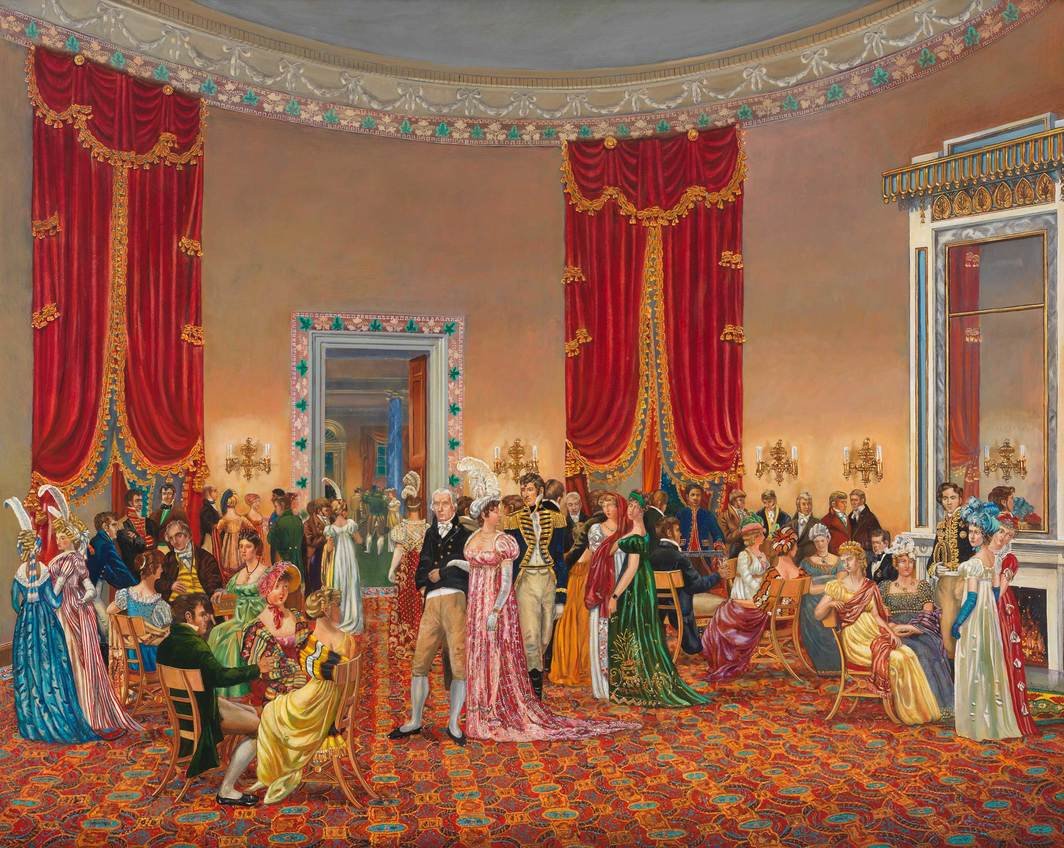
























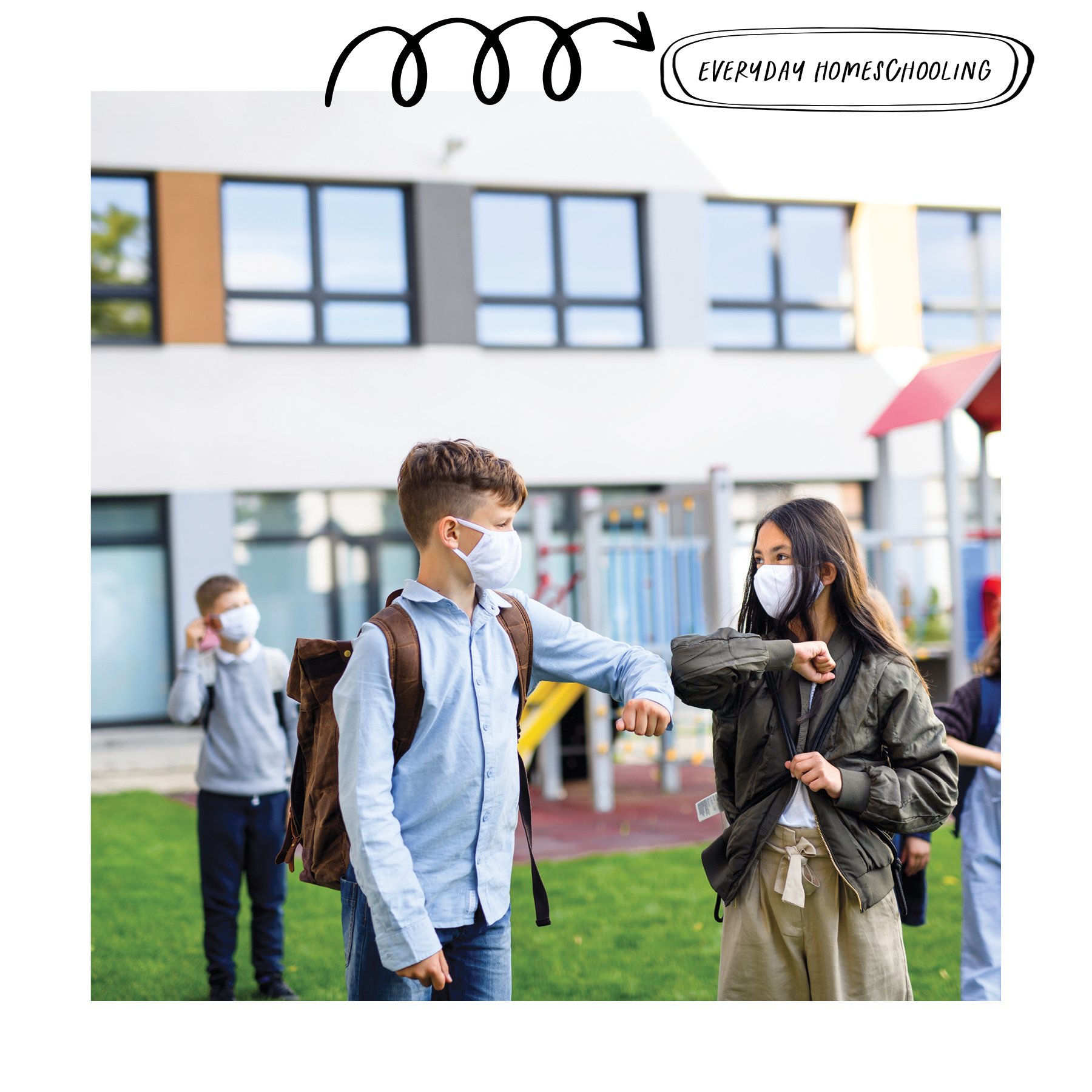



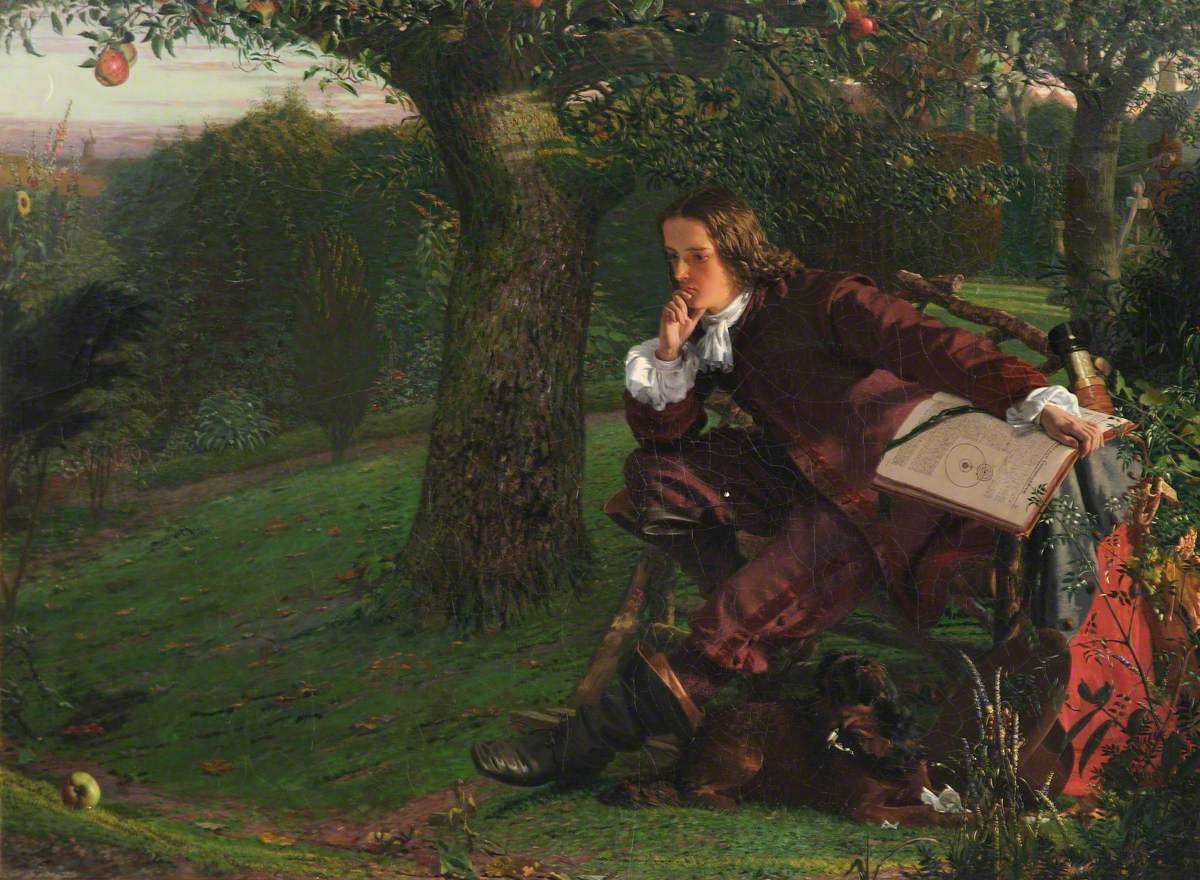














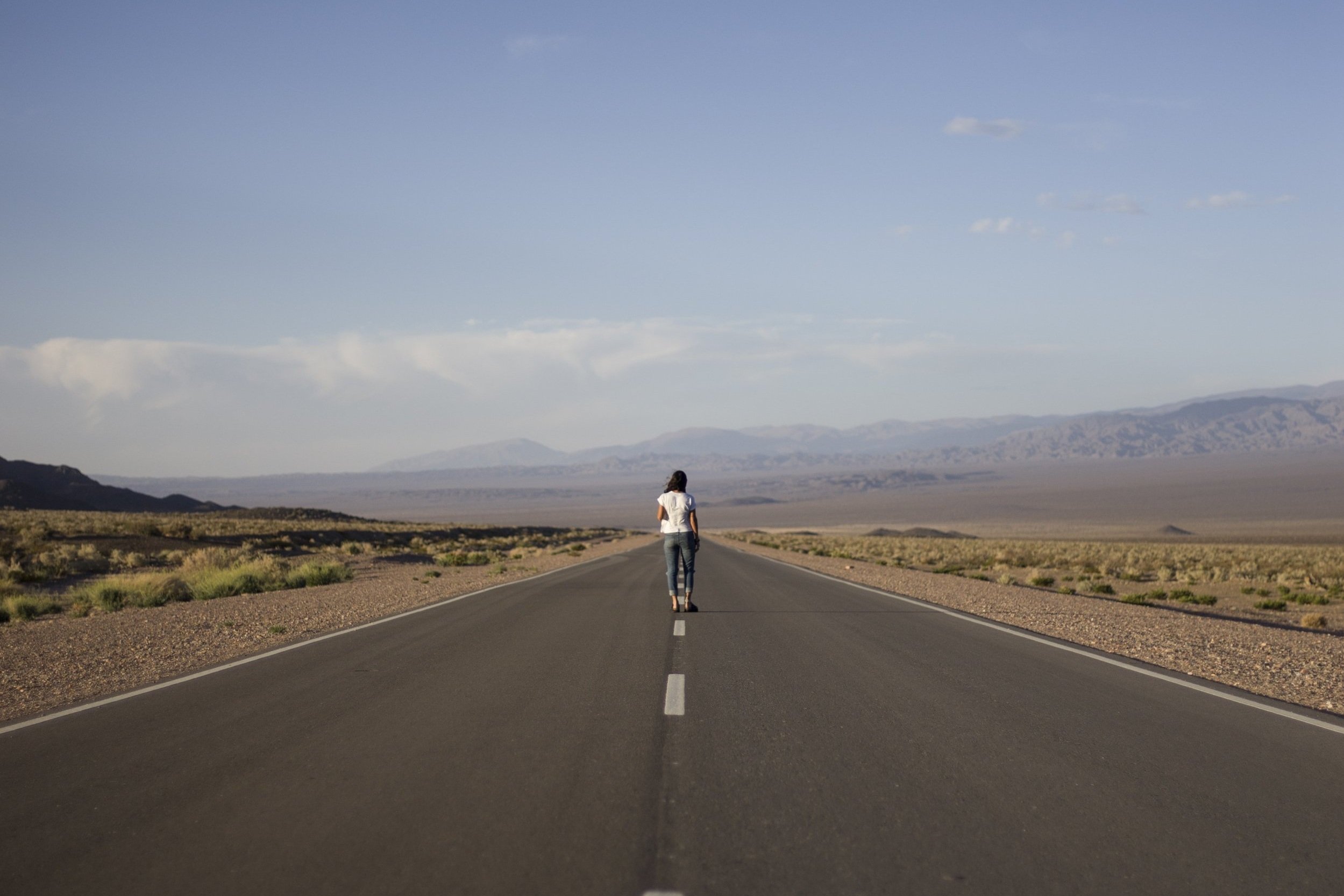



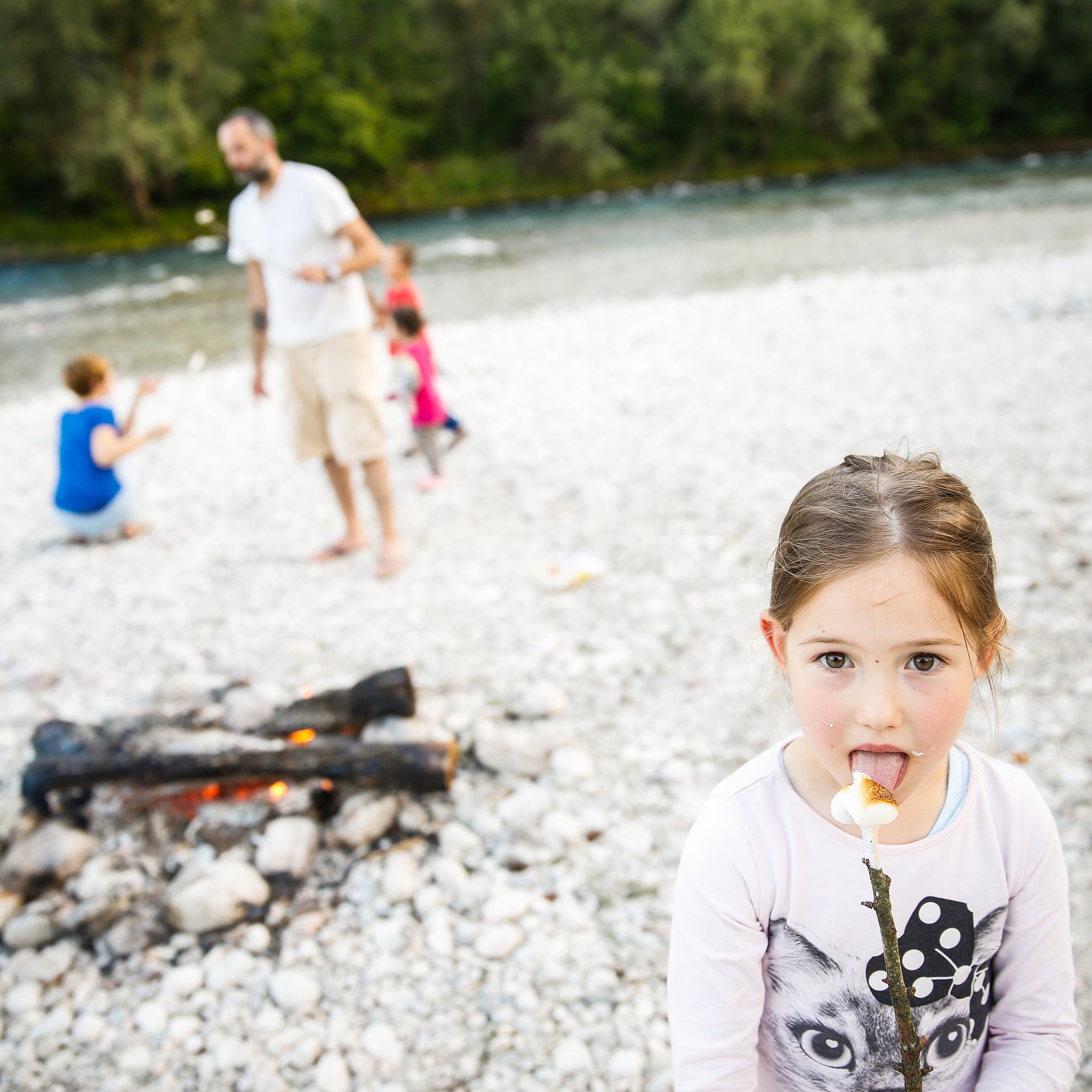






























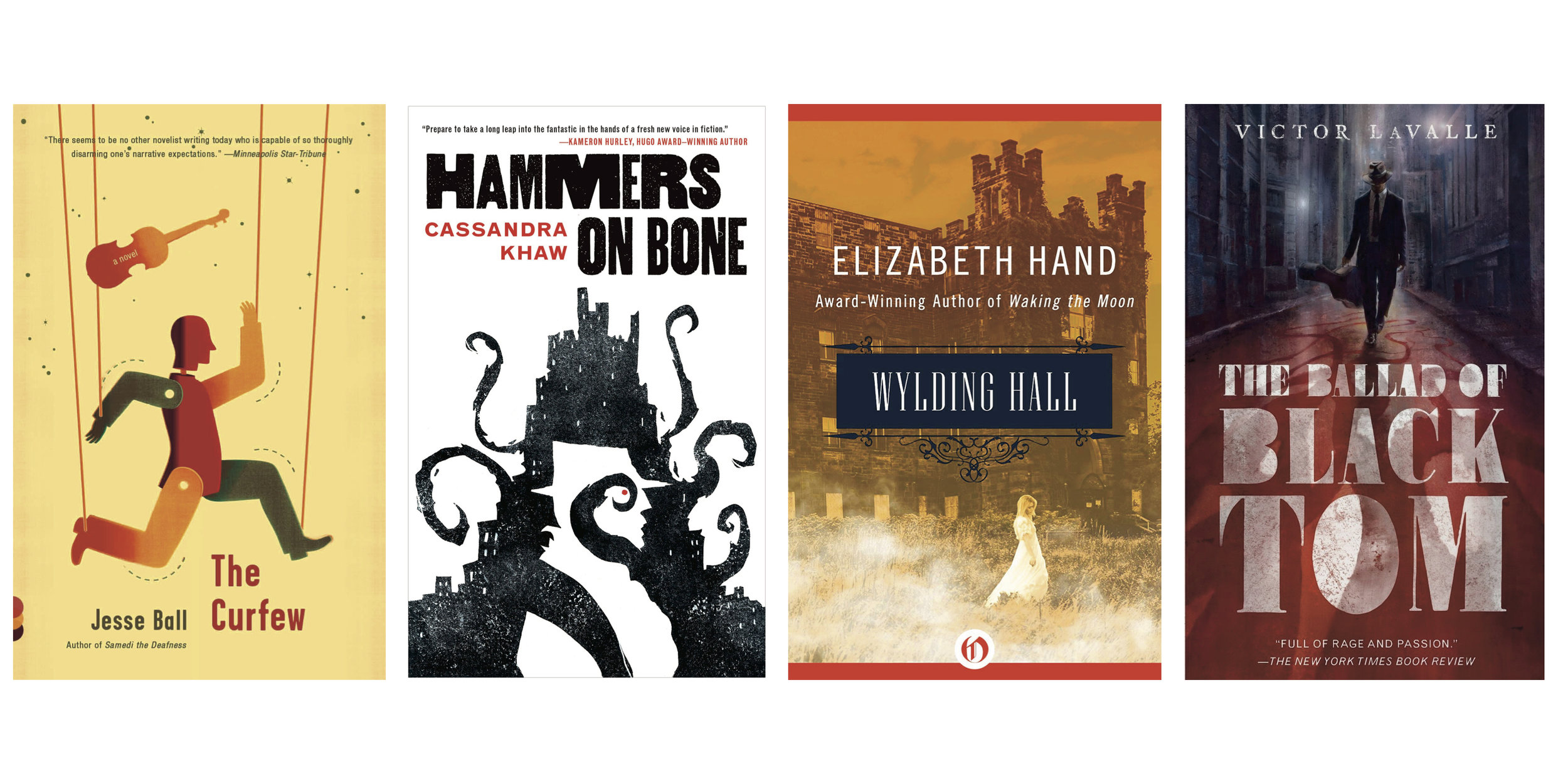






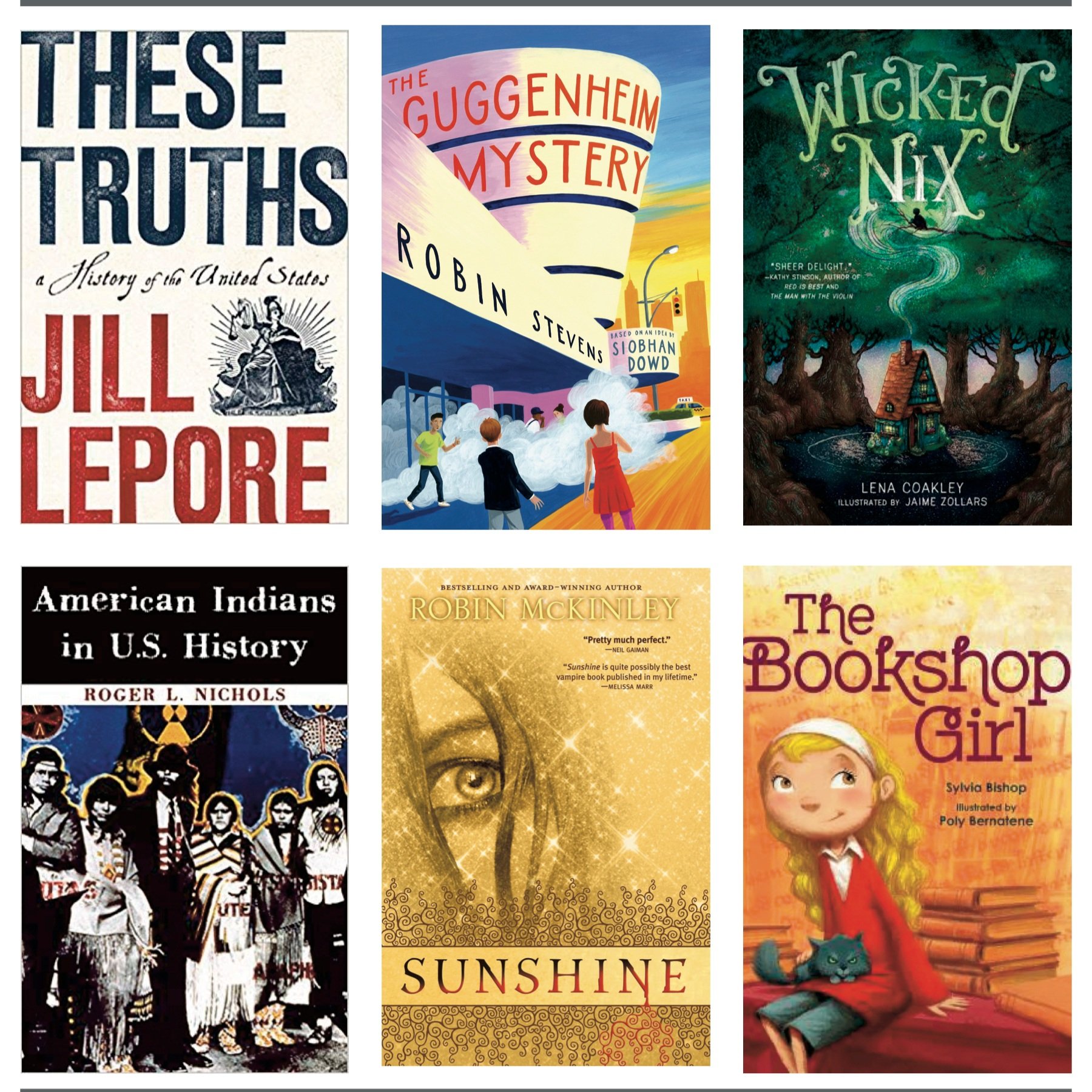






















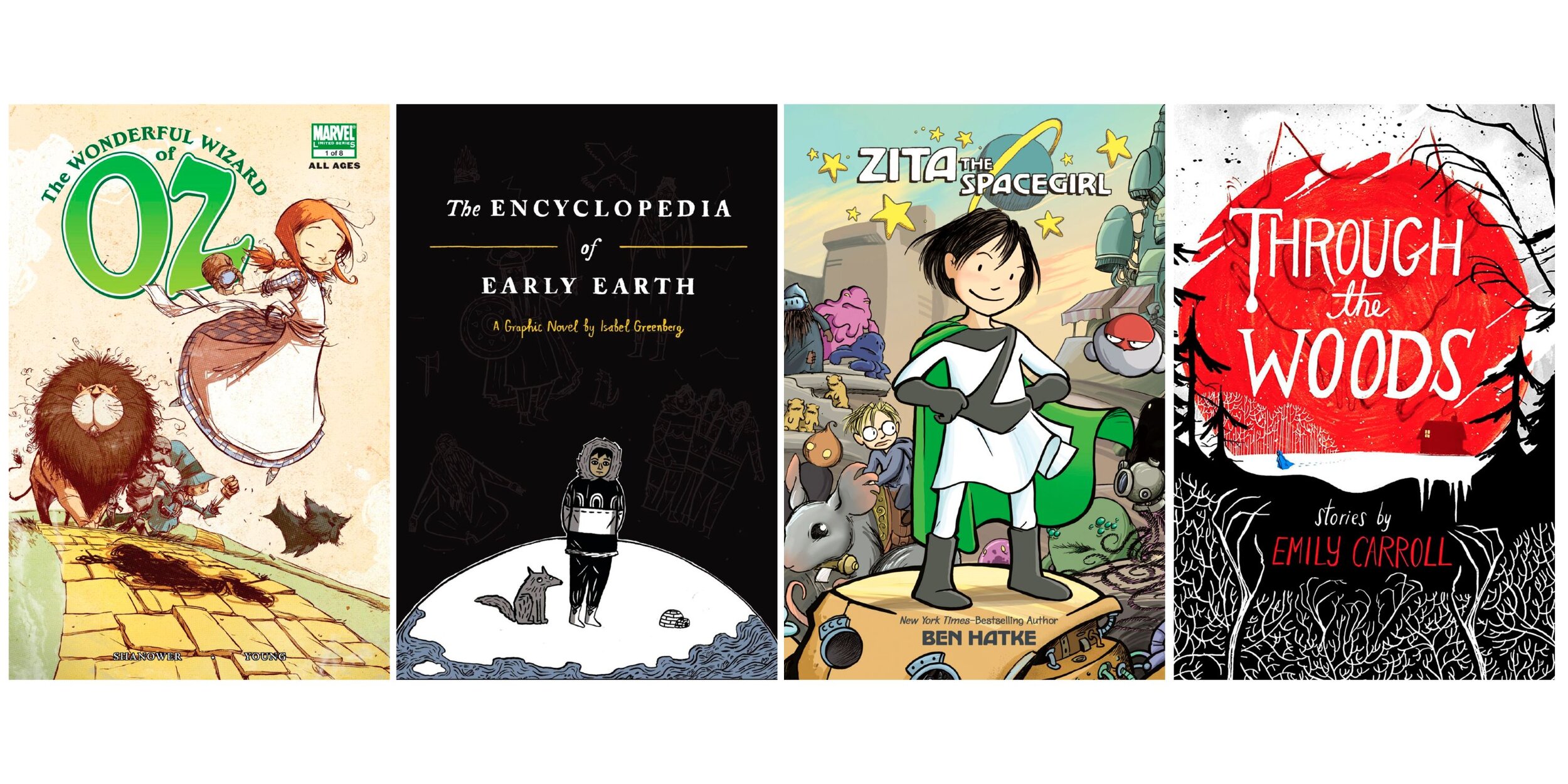


















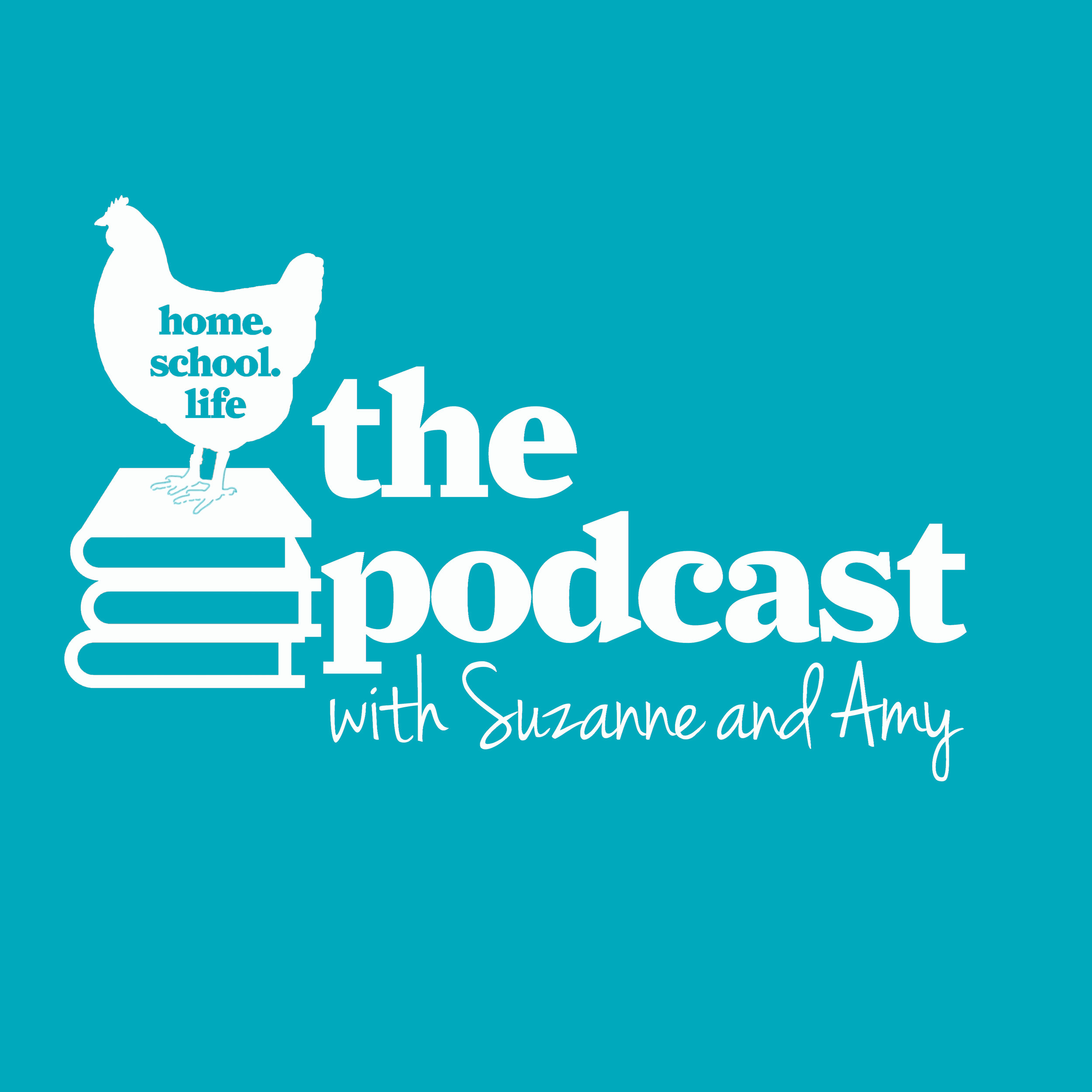




































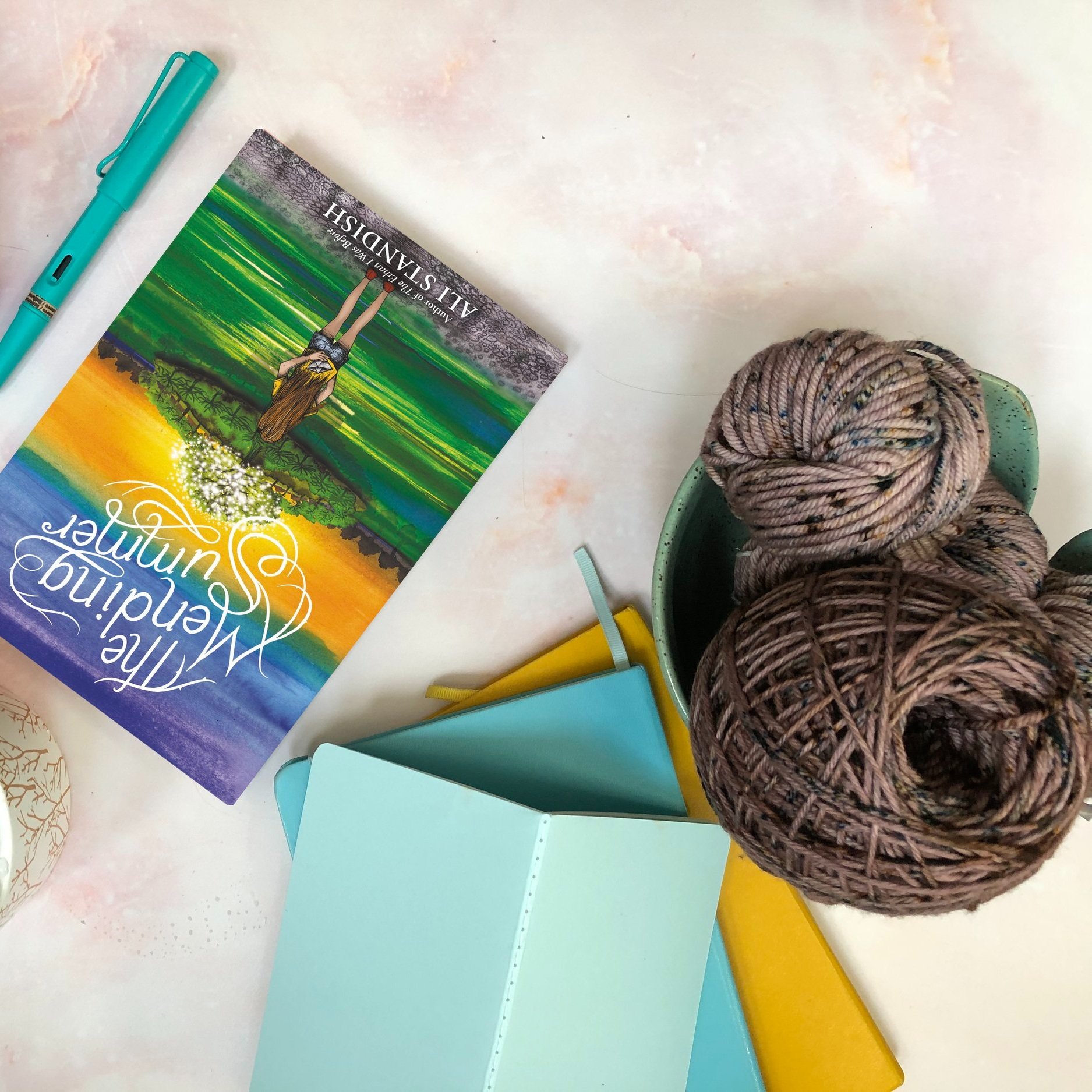















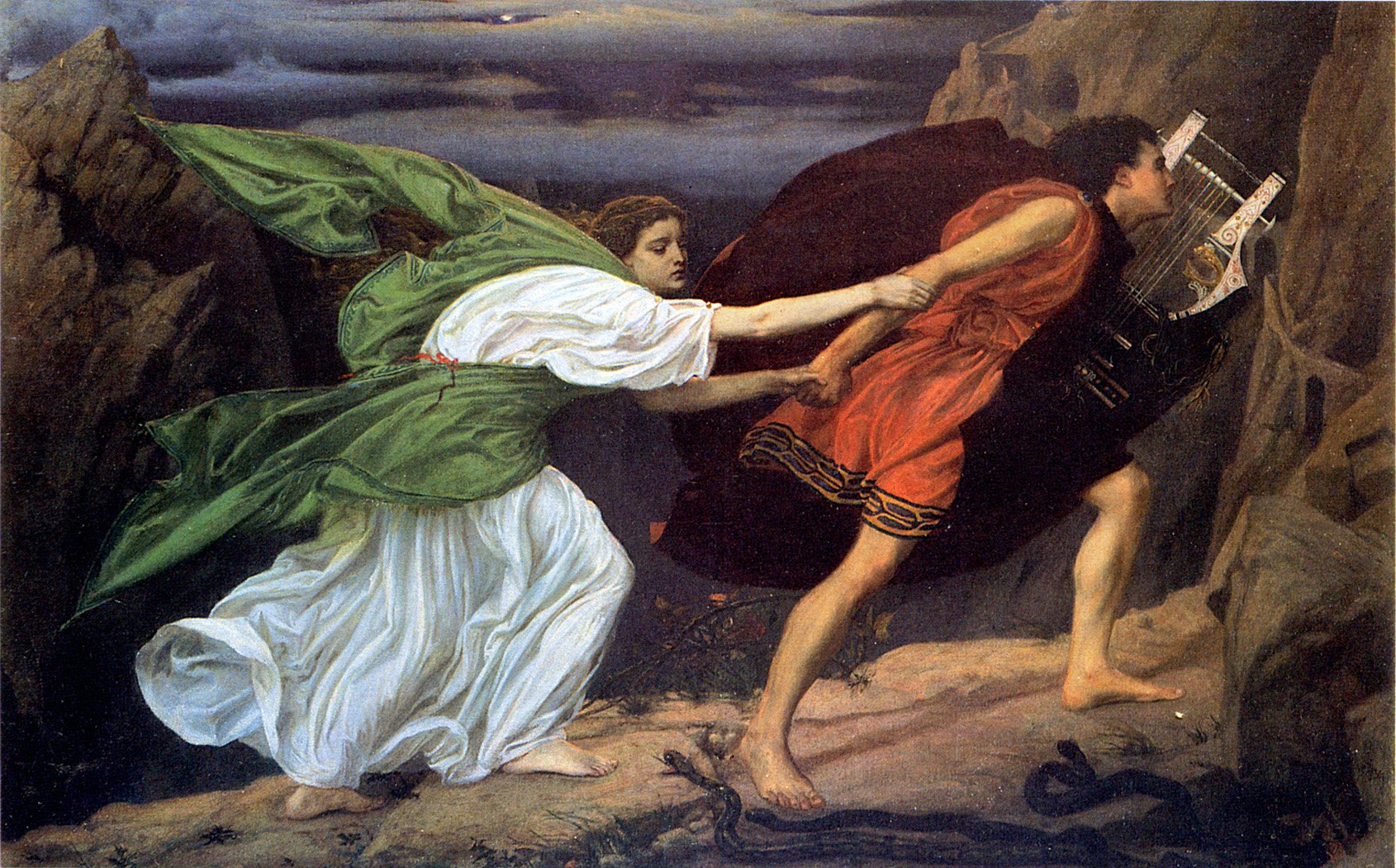
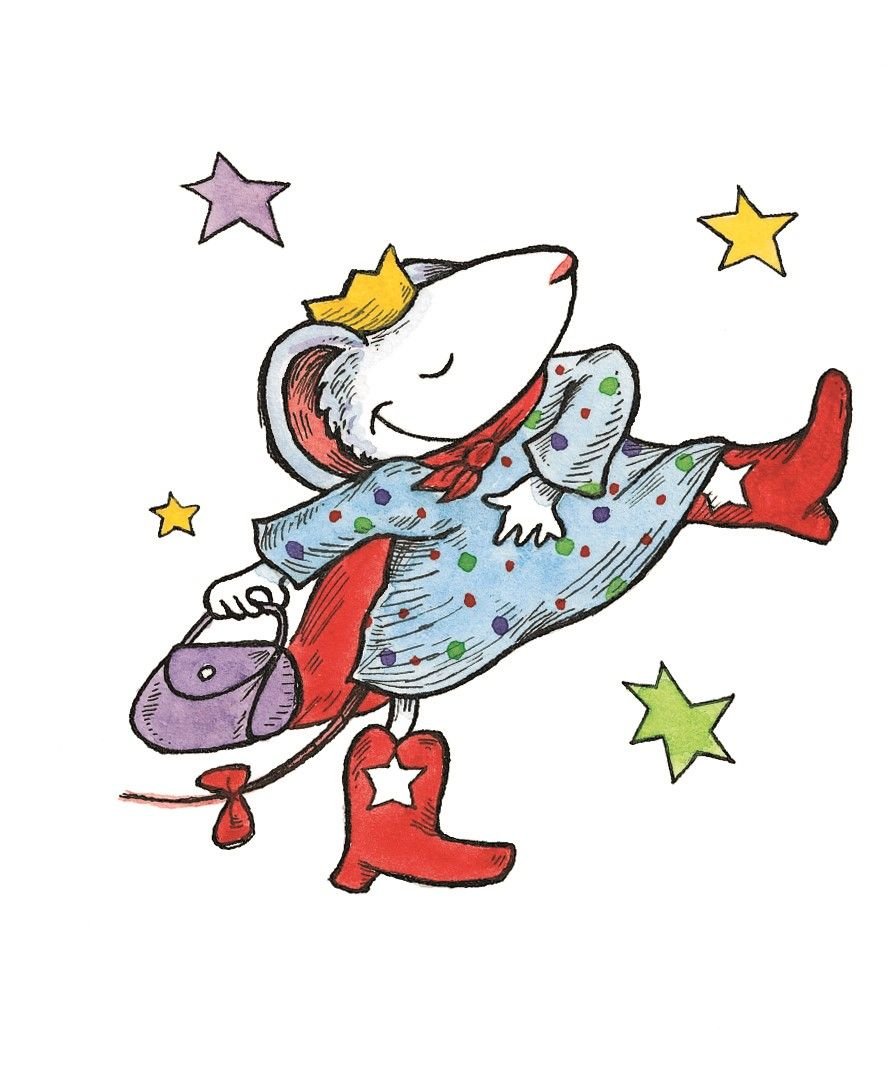
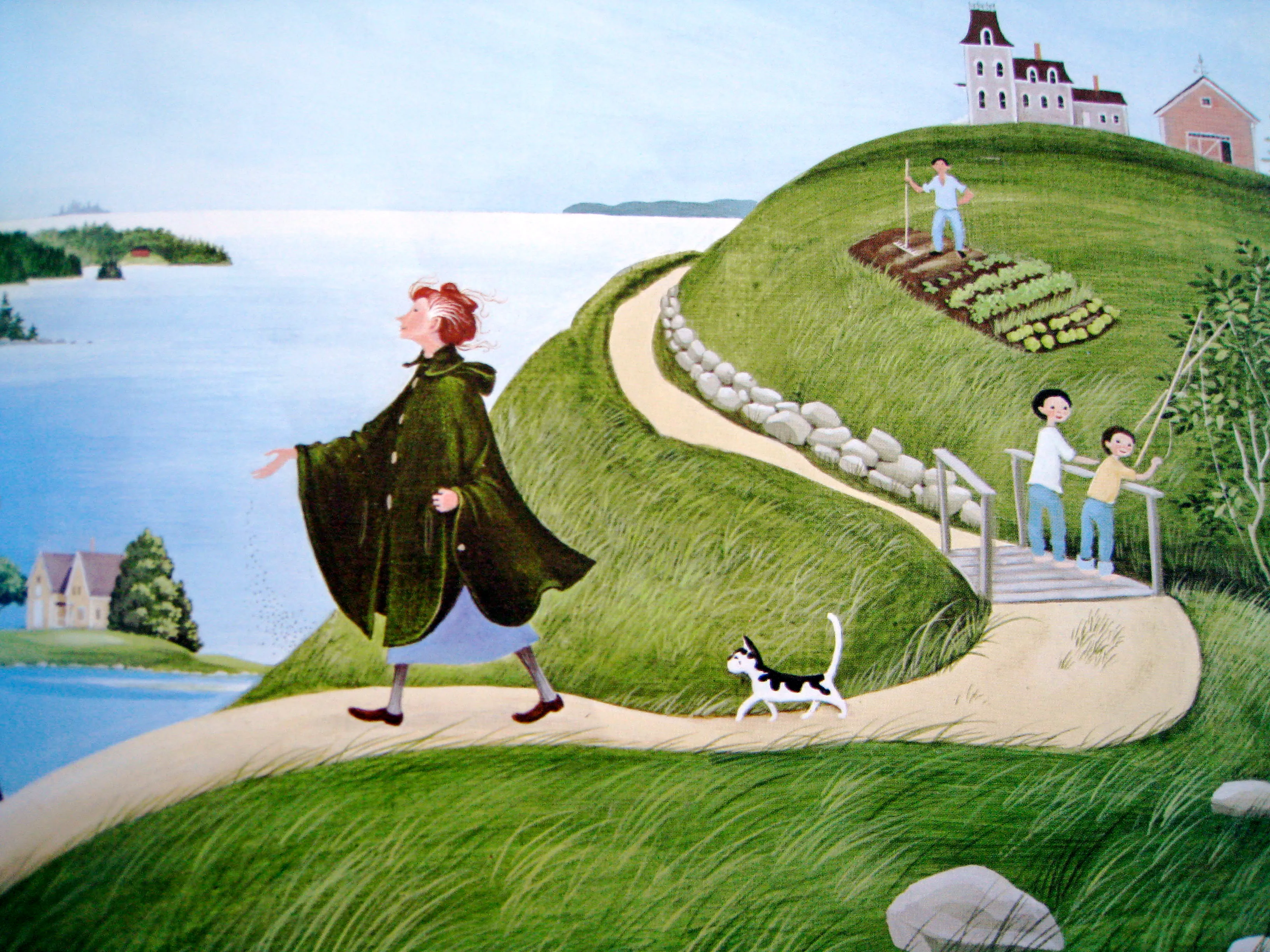


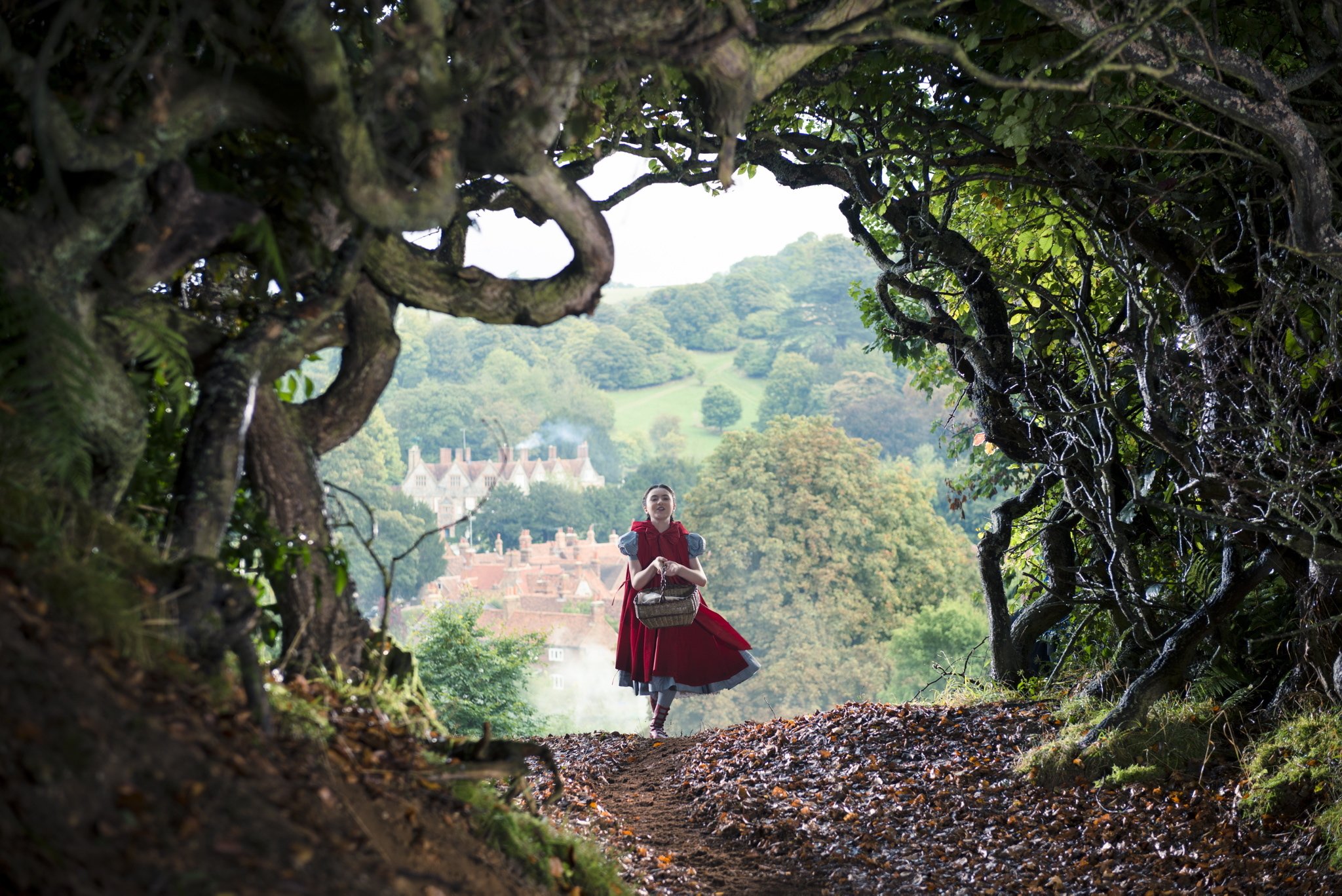































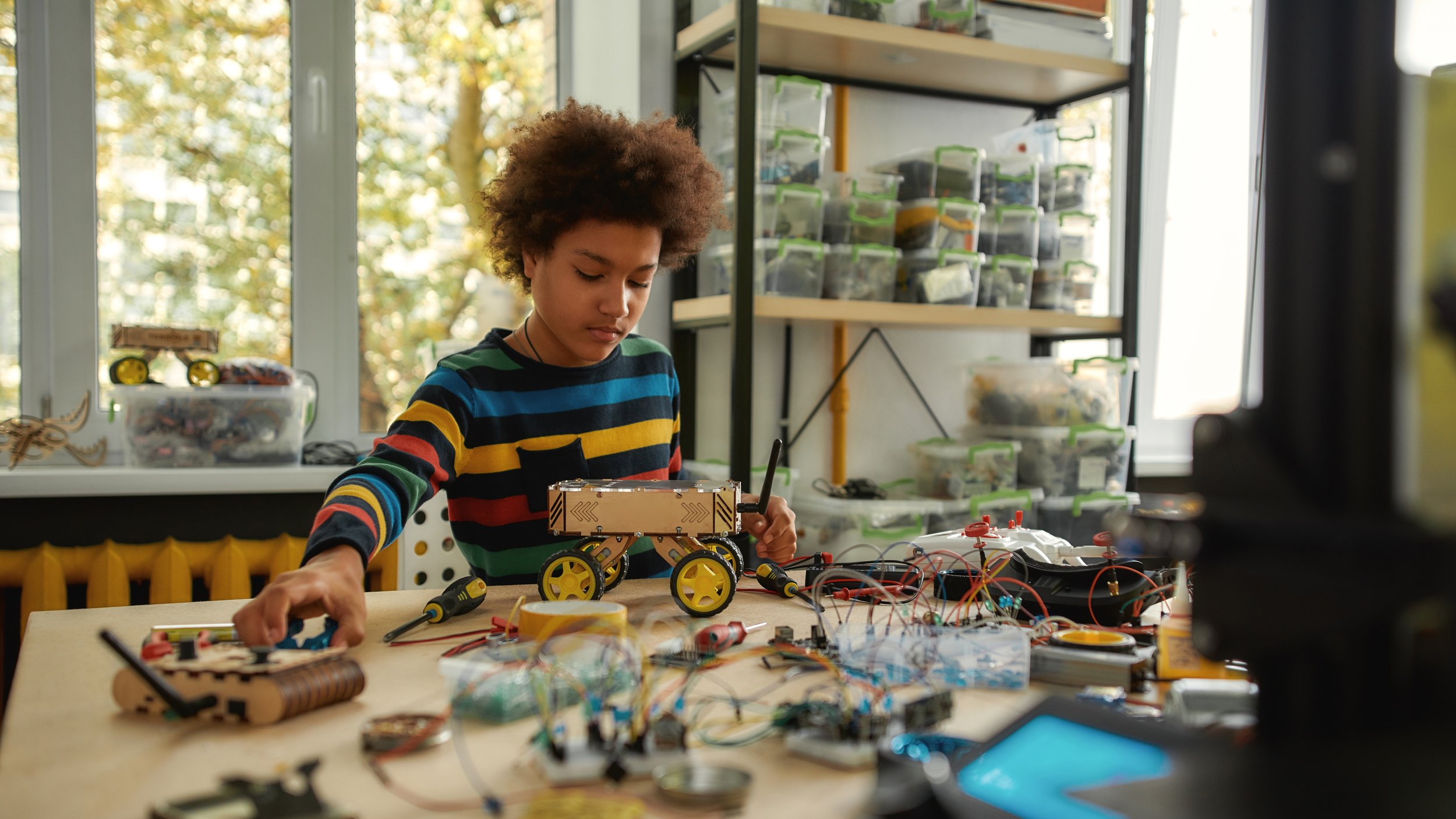
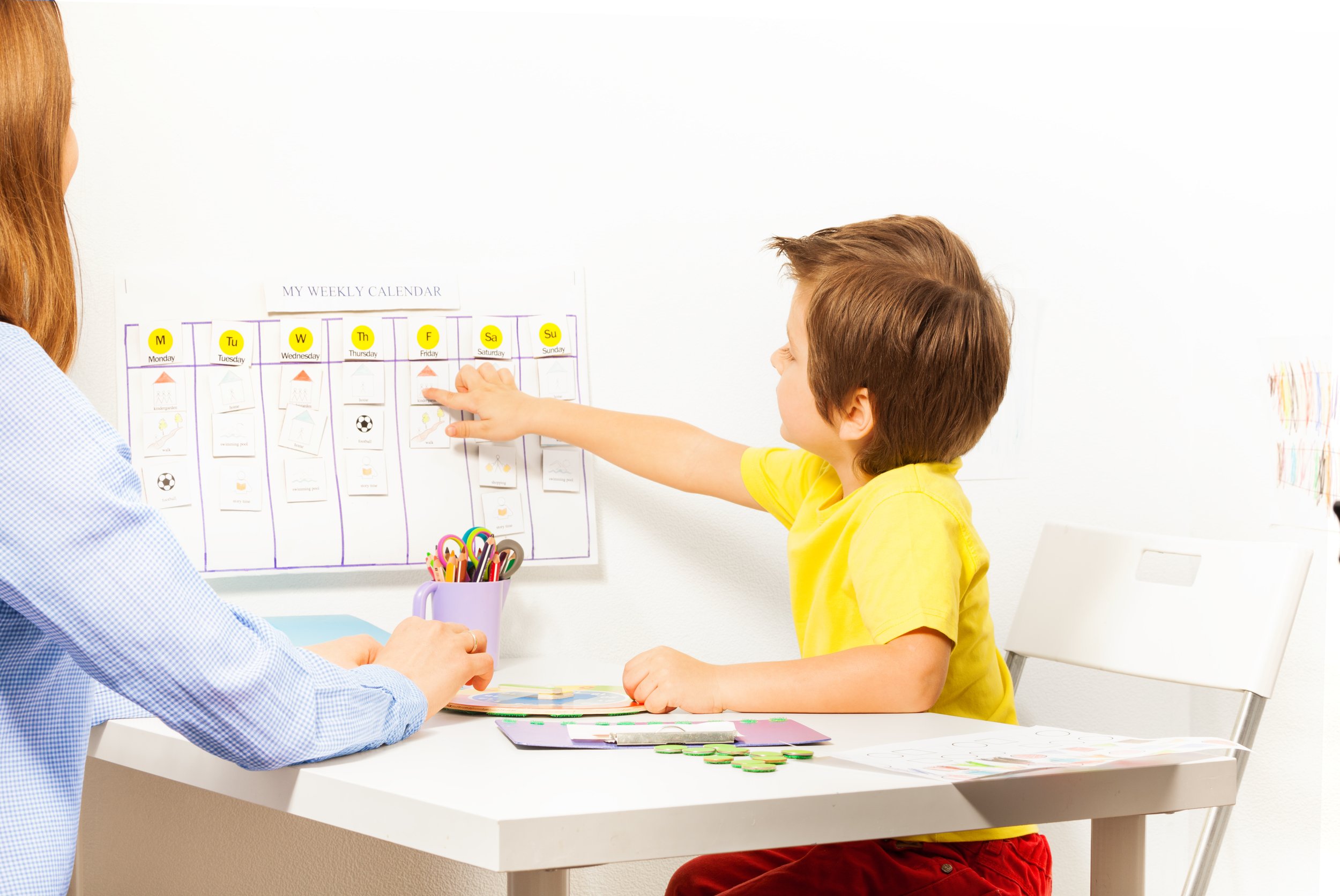






















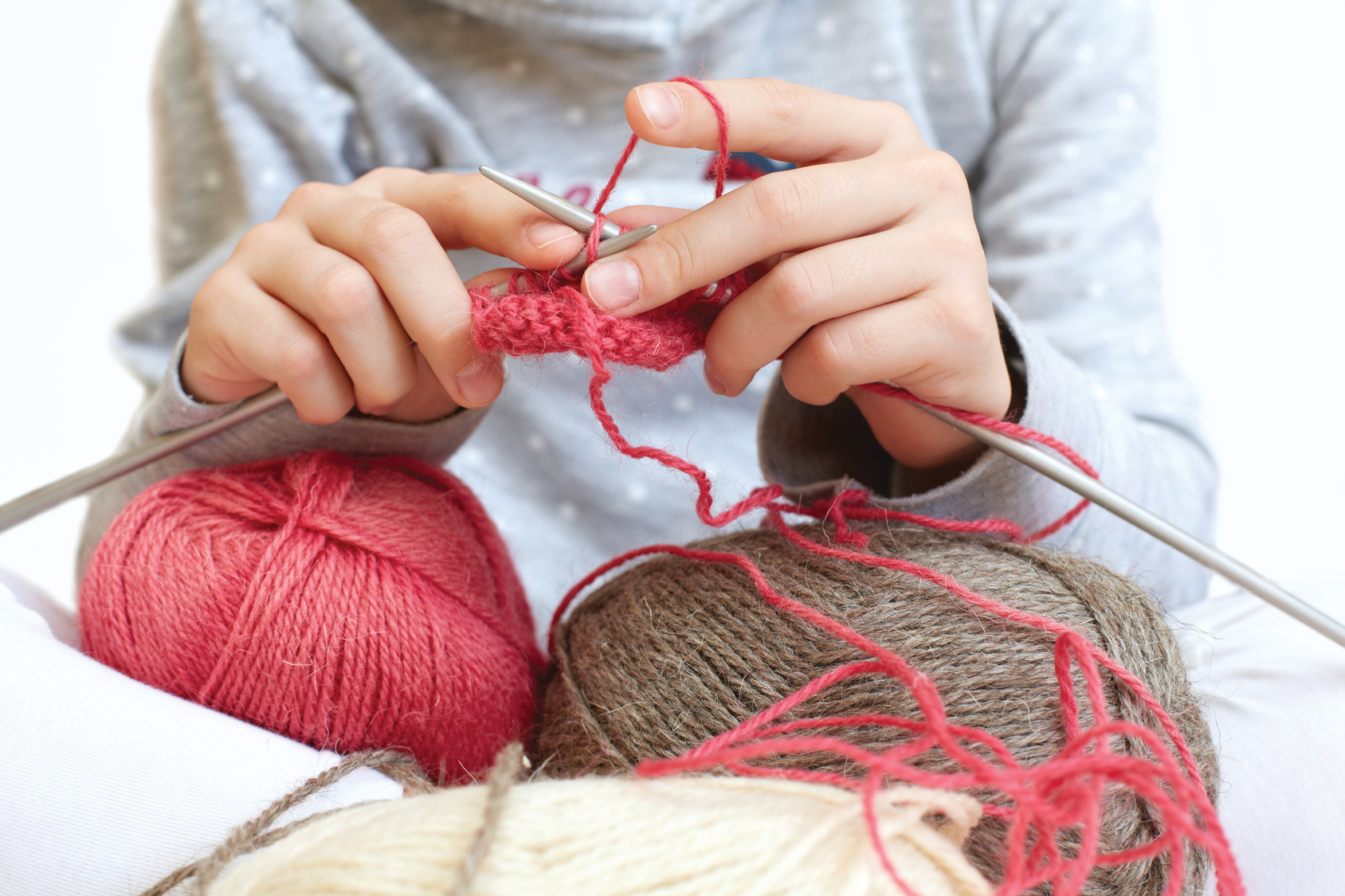






Celebrate the birthday of the renowned physicist, mathematician, astronomer, natural philosopher, alchemist, and theologian on January 4 with an Isaac Newton homeschool unit study.